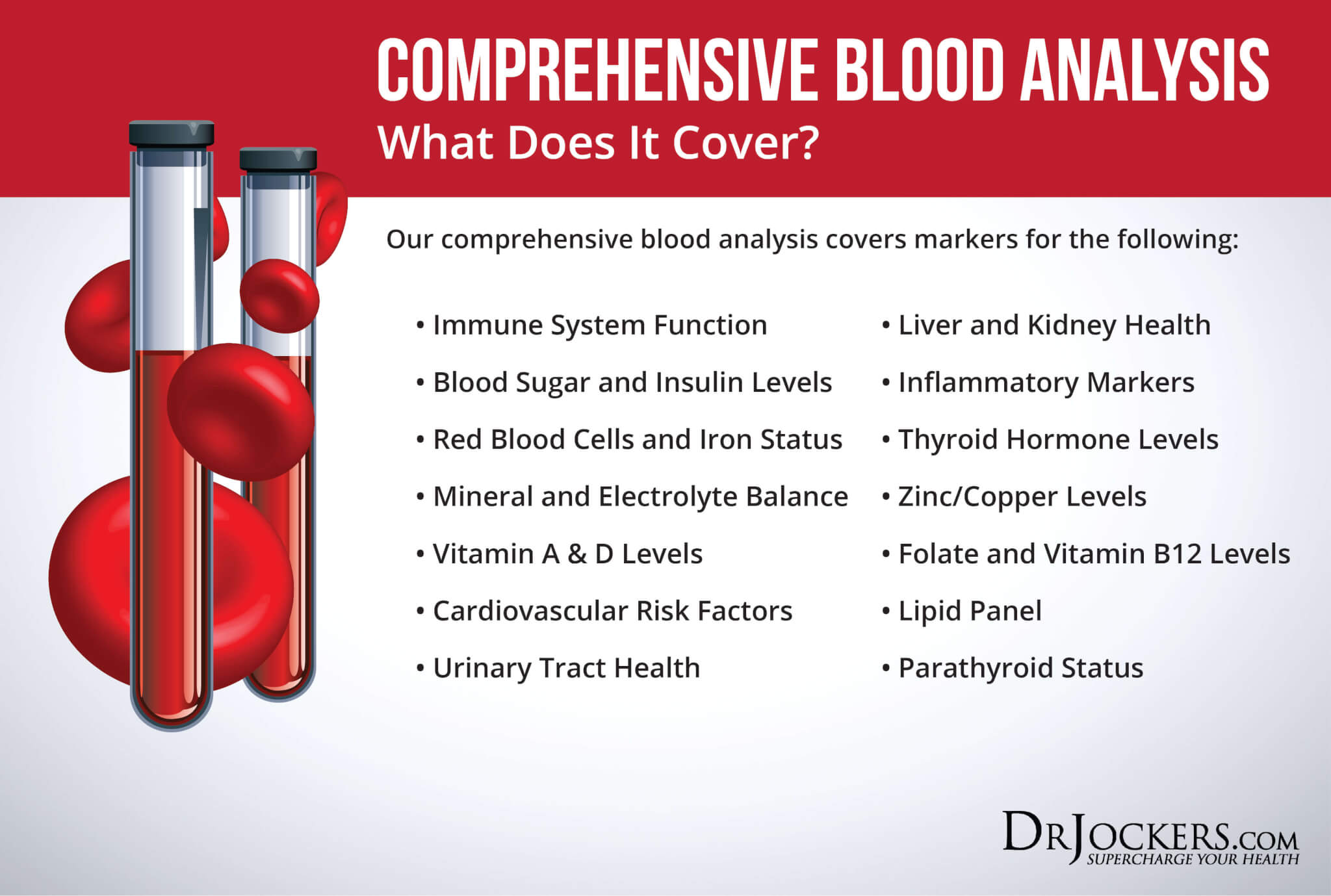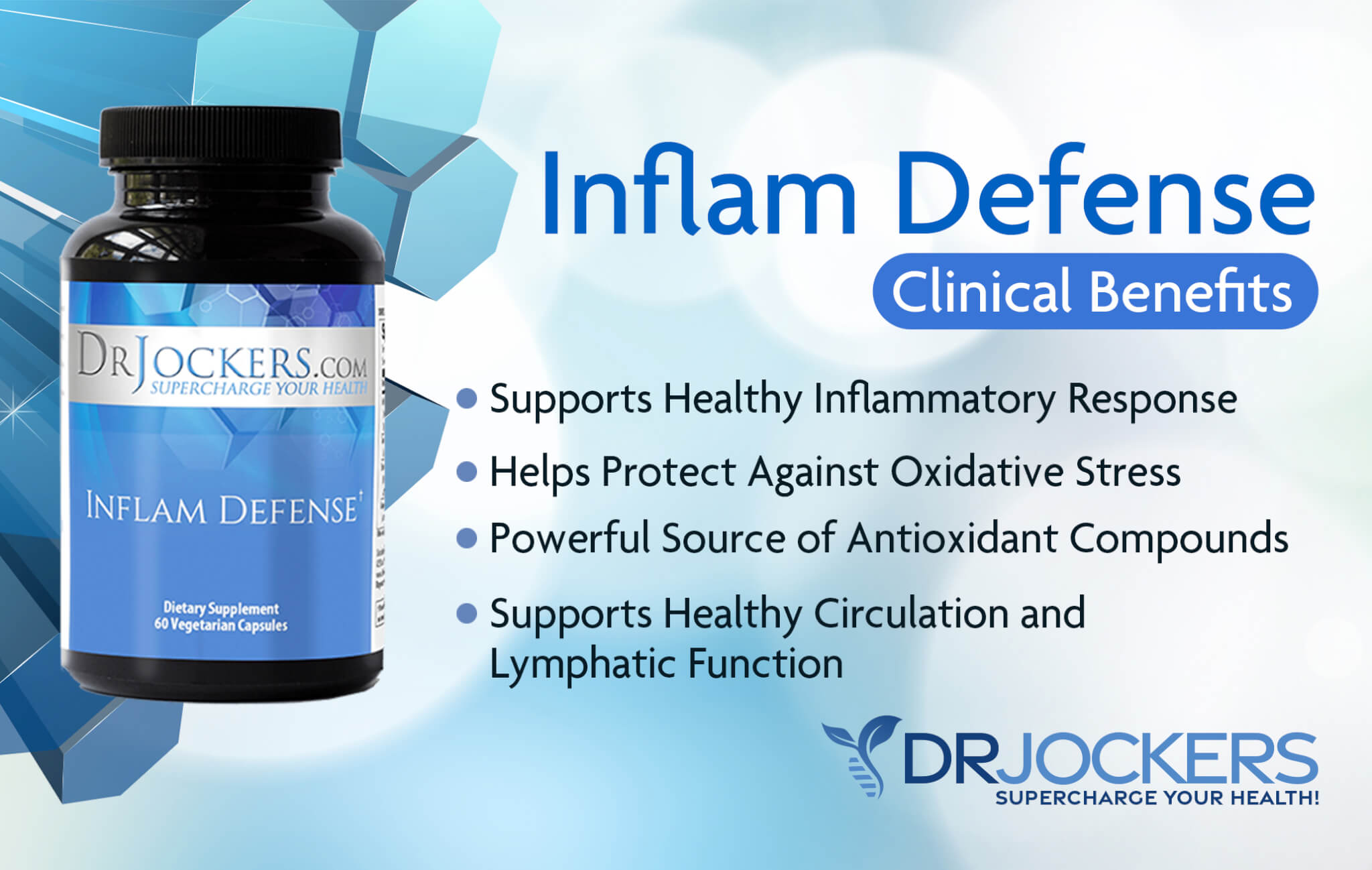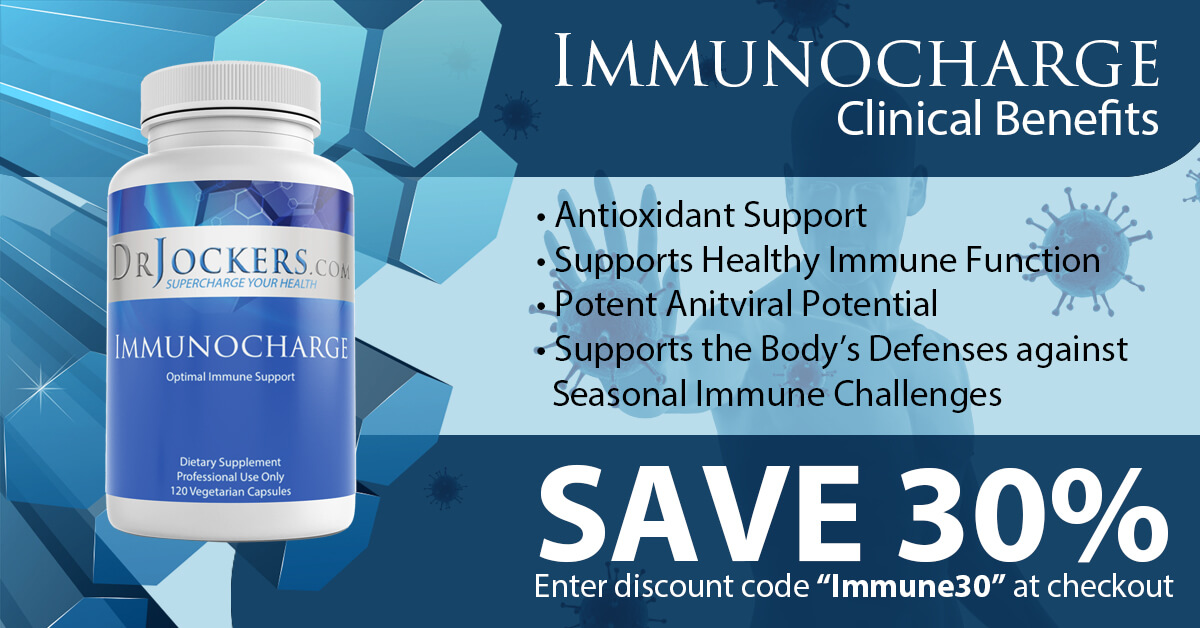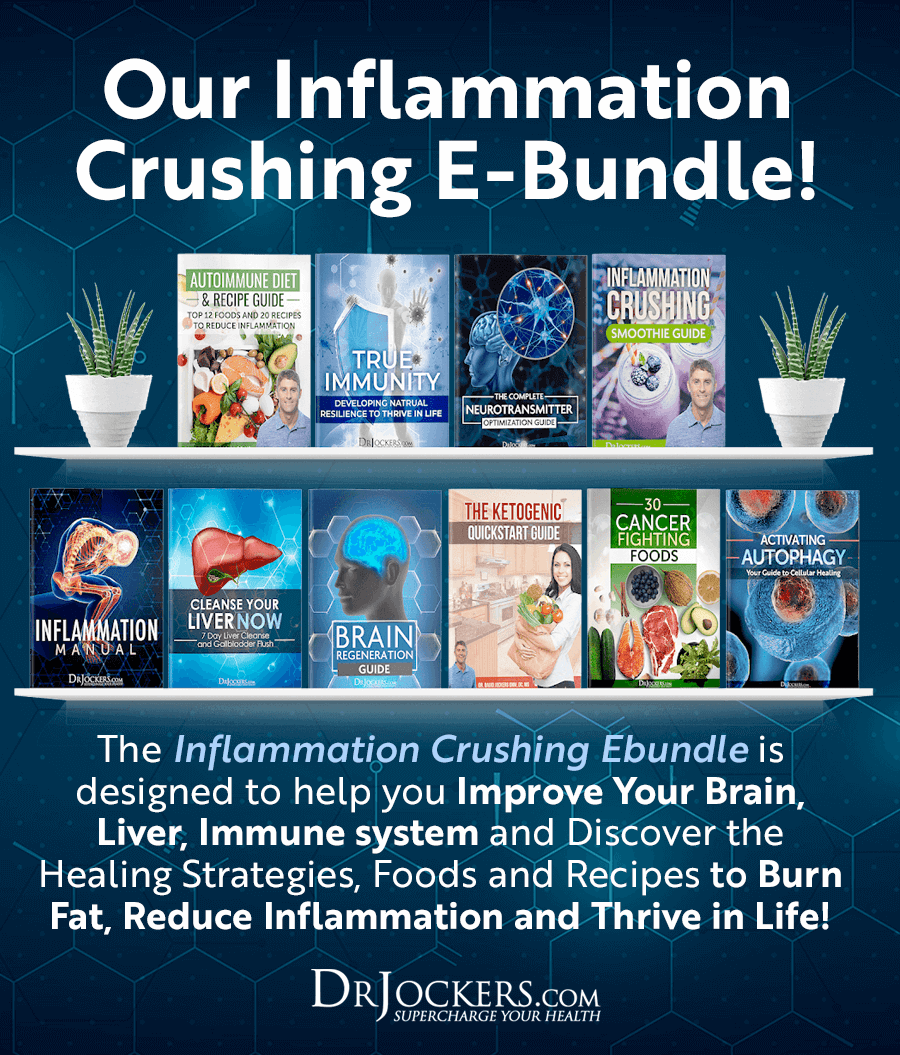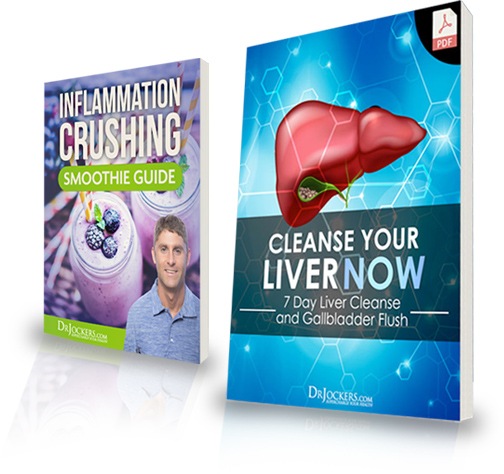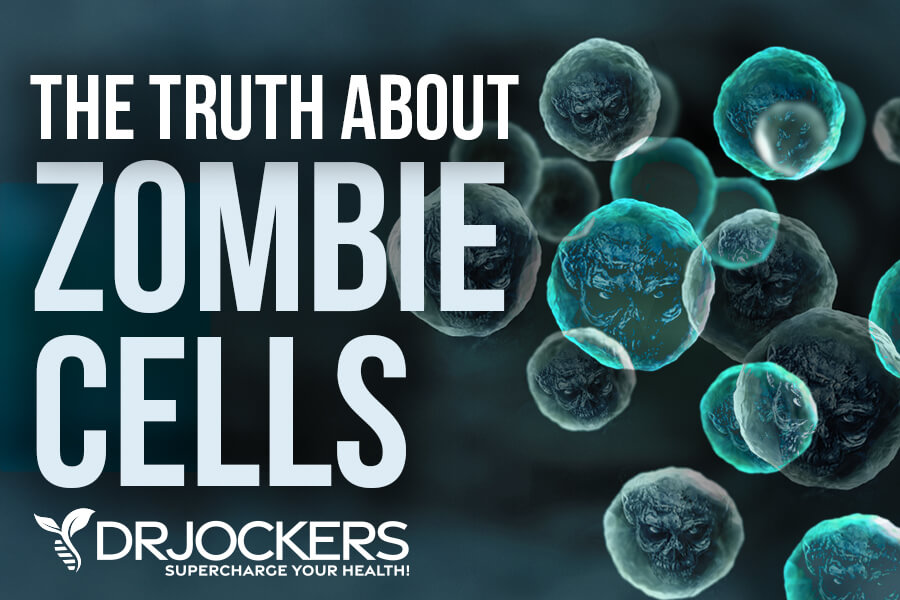 The Truth About Zombie Cells and How to Get Rid of Them
The Truth About Zombie Cells and How to Get Rid of Them
Have you ever heard about zombie cells? Don’t worry, they won’t turn you into actual zombies. But zombie cells can seriously disrupt your health and increase your risk of chronic symptoms and health issues.
Zombie cells are damaged cells that have stopped dividing and functioning normally but refuse to die. They are cells that should be dead but refuse to die and accumulate in your body damaging your healthy cells and tissues.
In this article, you will learn what zombie cells are. You will understand the characteristics of zombie cells. I will go over the characteristics of zombie cells. You will understand the common symptoms of high zombie cell accumulation.
I will share my lab testing recommendations for zombie cells. I will share the 3 essentials for getting rid of zombie cells. I will offer my best strategies for getting rid of zombie cells. Finally, I will share some key herbs and supplements to combat zombie cells and regain your health.
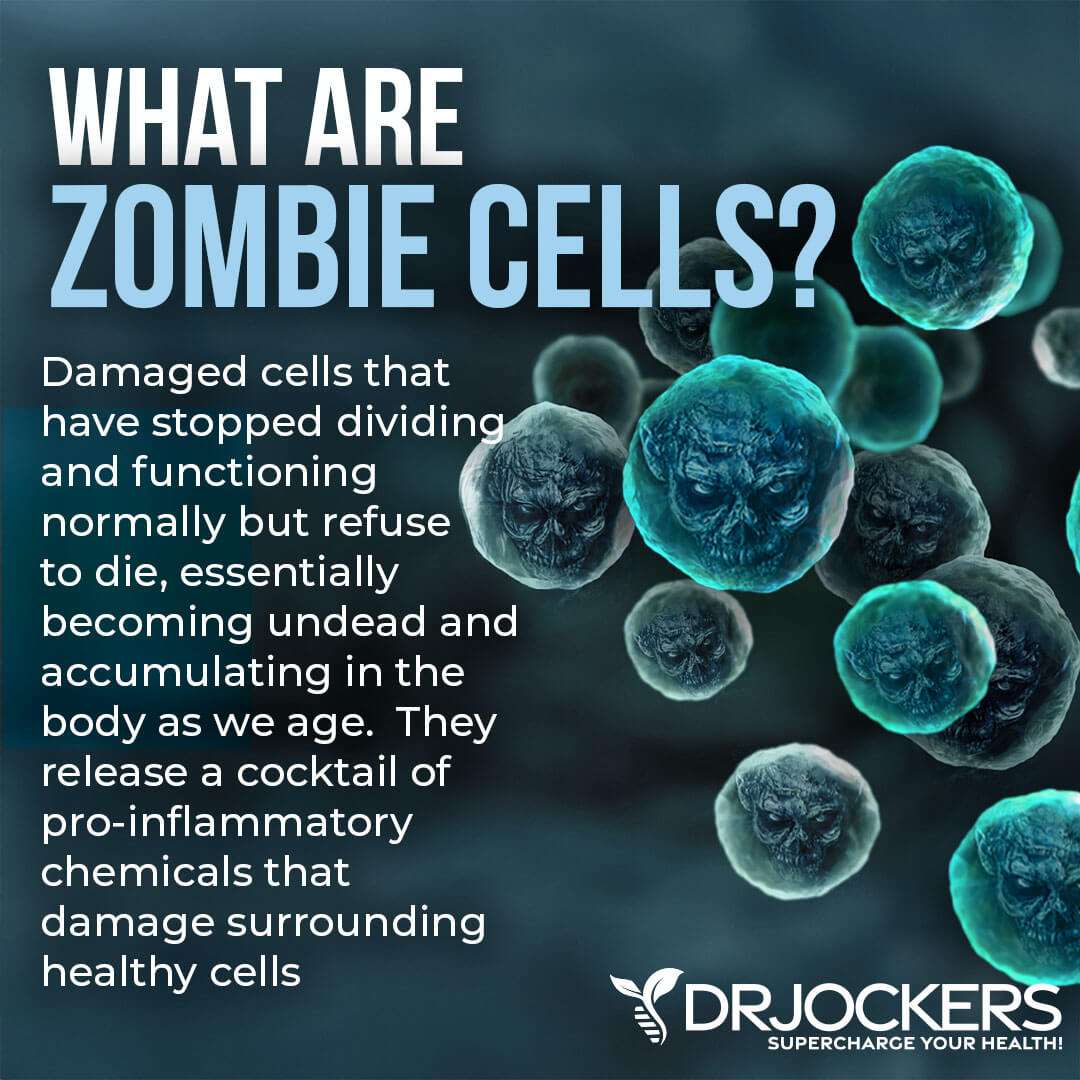
What are Zombie Cells?
In a normal cellular life cycle, when a cell becomes old or damaged, it will stop replicating and enter cell death or apoptosis, then get reabsorbed into your body by phagocytes, which are your body’s cleaners. Instead of apoptosis, zombie cells are cells that enter senescence instead which means they permanently stop dividing without actually dying.
Zombie cells are damaged cells that have stopped dividing and functioning normally but refuse to die. They essentially become undead and accumulate in our bodies as we age. Zombie cells don’t just hang out without causing damage.
They release abnormal signals to cells near them, which may cause these cells to enter senescence as well. Zombie cells also release a cocktail of pro-inflammatory chemicals that damage surrounding healthy cells and this leads to the process of inflammaging (1).
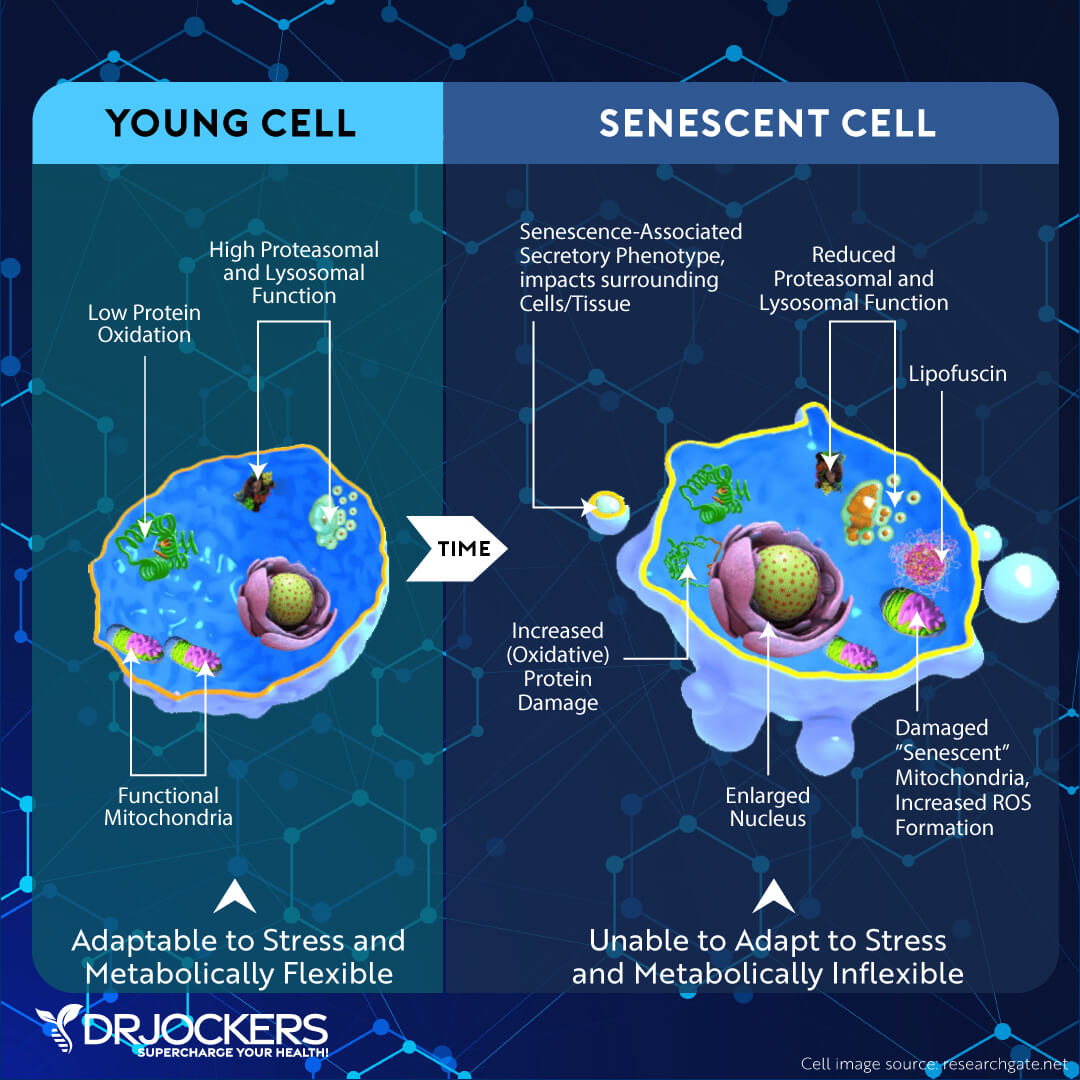
How Do Zombie Cells Form?
So where do zombie cells come from and how do they work? Cellular senescence may develop for a variety of reasons, but generally, it occurs to stop further excessive stress or damage due to continual cellular replication (1, 2, 3, 4).
Here are some varieties of senescence:
- Replicative: This happens when a cell reaches the maximum number of cell revisions. It’s unable to replicate anymore because of telomere shortening.
- Oncogene-gene induced: Oncogenes are a type of genes that regulate cell replication. When they are activated or overexpressed, they allow excessive cell proliferation beyond optimal levels. To stop tumor formation, these cell triggers two tumor-suppressing pathways, which also induce cellular senescence.
- Stress-induced: Free radicals, ionizing radiation, oxidizing agents, and other stressors may lead to single-stranded breaks (SSBs) in the cell’s DNA which results in a DNA damage response and potentially, premature senescence in healthy cells.
- Irradiation-induced: UV radiation may also lead to DNA damage by ionizing the DNA nucleotides, causing cellular senescence in skin cells. This explains why the skin may have a high density of zombie cells.
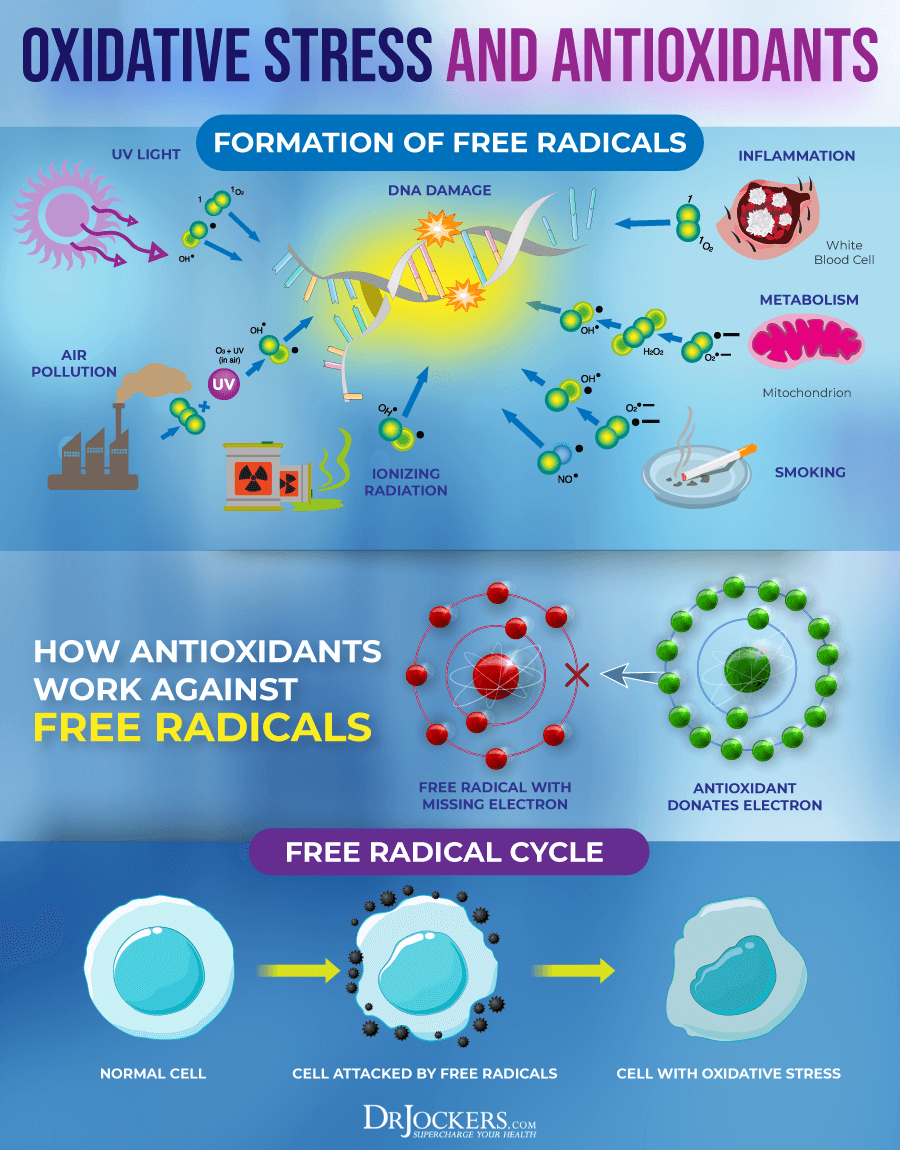
Zombie Cells and Chronic Inflammation
Cells enter the senescence state to stop any further cell replication. The goal is to inform the immune system of the problem and prompt it to clean up the zombie cells. Zombie cells release inflammatory chemicals and use cellular signaling to alert the immune system so your body can send natural killer cells to clean them up.
When they don’t get cleared out, it can turn into a problem. Chronic inflammation, digestive dysfunction, protein metabolism imbalance, mitochondrial dysfunction, DNA methylation issues, other epigenetic factors, telomere degradation, and structural DNA damage can all increase senescent zombie cells, which can lead to more inflammation, inflammaging cytokines, and stem cell exhaustion.
As you age, your immune system becomes weaker, and it won’t be able to clear out zombie cells efficiently. Chronic inflammation, immune system issues, and other health factors may also result in similar inefficiency.
When zombie cells don’t get cleared out, they stay to linger and end up releasing senescence-associated secretory phenotypes (SASP0, which are inflammatory factors that can cause wide-range chronic inflammation. High levels of inflammatory cytokines due to these lingering zombi cells can increase signs of aging, metabolic issues, diabetes, blood clots, neurological disorders, heart disease, cancer, and other health issues (5, 6, 7).
Senescent cells also communicate and influence cells nearby through these inflammatory signaling factors. This can affect nearby cells, especially impressionable stem cells neighboring zombie cells. As a result, stem cells can become exhausted and damaged and become senescent as well.
Senescent cells, especially in large numbers, can interrupt the joint network of cells, disrupt cellular communication, negatively affect structural integrity, interfere with cellular growth, and cause problems in other areas of cellular function.
If zombie cells disrupt stem cell growth and function, it can cause issues in the entire tissue they are located in. This stem cell exhaustion plays a big role in aging and age-related organ dysfunction and disease (2).
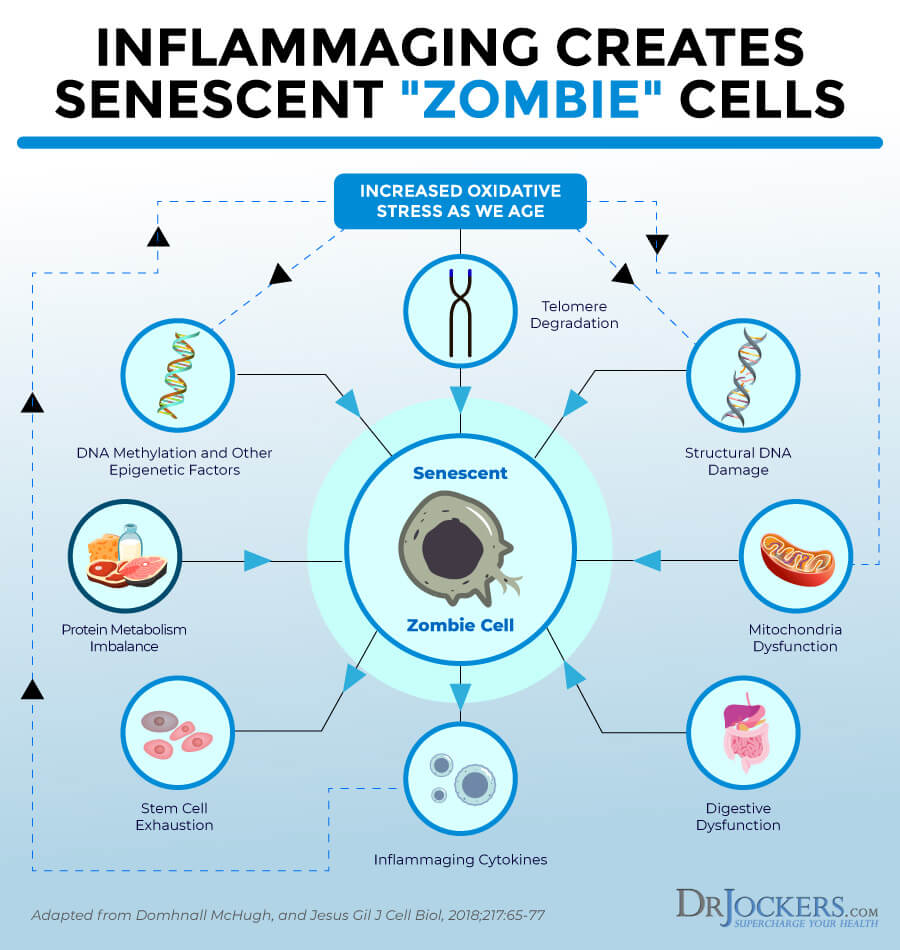
Characteristics of Zombie Cells
The characteristics of senescent zombie cells include:
- Permanent growth arrest: Zombie cells can’t divide or replicate anymore even though they are metabolically active and ‘alive’.
- Resistance to apoptosis: Though zombie cells are damaged and can’t divide, they resist programmed cell death and remain active in your tissues.
- Altered morphology: Compared to healthy cells, zombie cells tend to be larger, flatter, and have irregular shapes.
- Increased metabolic activity: Zombie cells can’t divide but they show high metabolic activity and consume more energy compared to normal cells.
- Senescence-associated secretory phenotype (SASP): Zombie cells release pro-inflammatory cytokines, proteases, and growth factors that can lead to chronic inflammation and problems with tissue function.
- DNA damage and dysfunction: Zombie cells may also show signs of DNA damage and genomic instability which may explain their senescent state.
- Disruption of tissue homeostasis: Zombie cells can accumulate in your tissue which can interfere with regenerative processes and increase signs of aging and the risk of age-related health issues.
- Pro-tumorigenic effects: SASP factors can affect the surrounding microenvironment of zombie cells which can increase the risk of tumor growth and metastasis.
- Cellular stress response: Zombie cells often develop as a cellular stress response to oxidative stress, oncogene activation, telomere shortening, and other stressors.
- Expression of senescence markers: Zombie cells express specific markers, which can help to identify them, such as p16INK4a, p21, and beta-galactosidase.
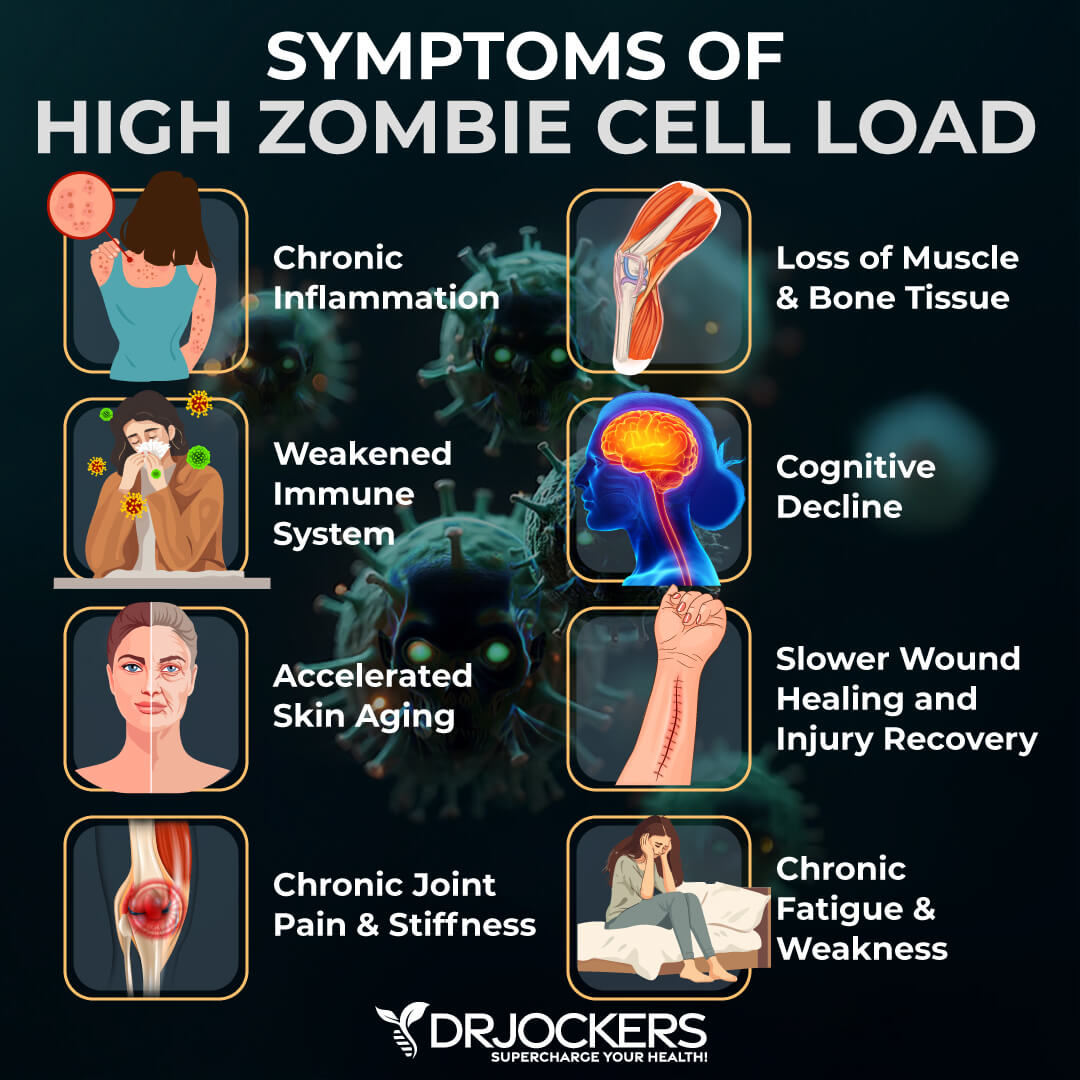
Common Symptoms of High Zombie Cell Accumulation
Most symptoms of high zombie cell accumulation are linked to systemic inflammation, and impaired cellular repair mechanisms, Common symptoms of high zombie cell accumulation may include:
- Chronic inflammation
- Weakened immune system, increased susceptibility to infections, and slower recovery
- Accelerated aging, causing issues including reduced skin elasticity, wrinkles, and hair loss
- Fatigue and low energy
- Decreased tissue function and organ dysfunction
- Joint pain and stiffness
- Muscle weakness, loss of muscle mass and muscle strength
- Cognitive decline, including brain fog, memory issues, and slower mental processing
- Increased age-related diseases, including osteoporosis, neurodegenerative conditions, cardiovascular disease, and diabetes
- Slower wound healing and delayed recovery from injuries and surgery
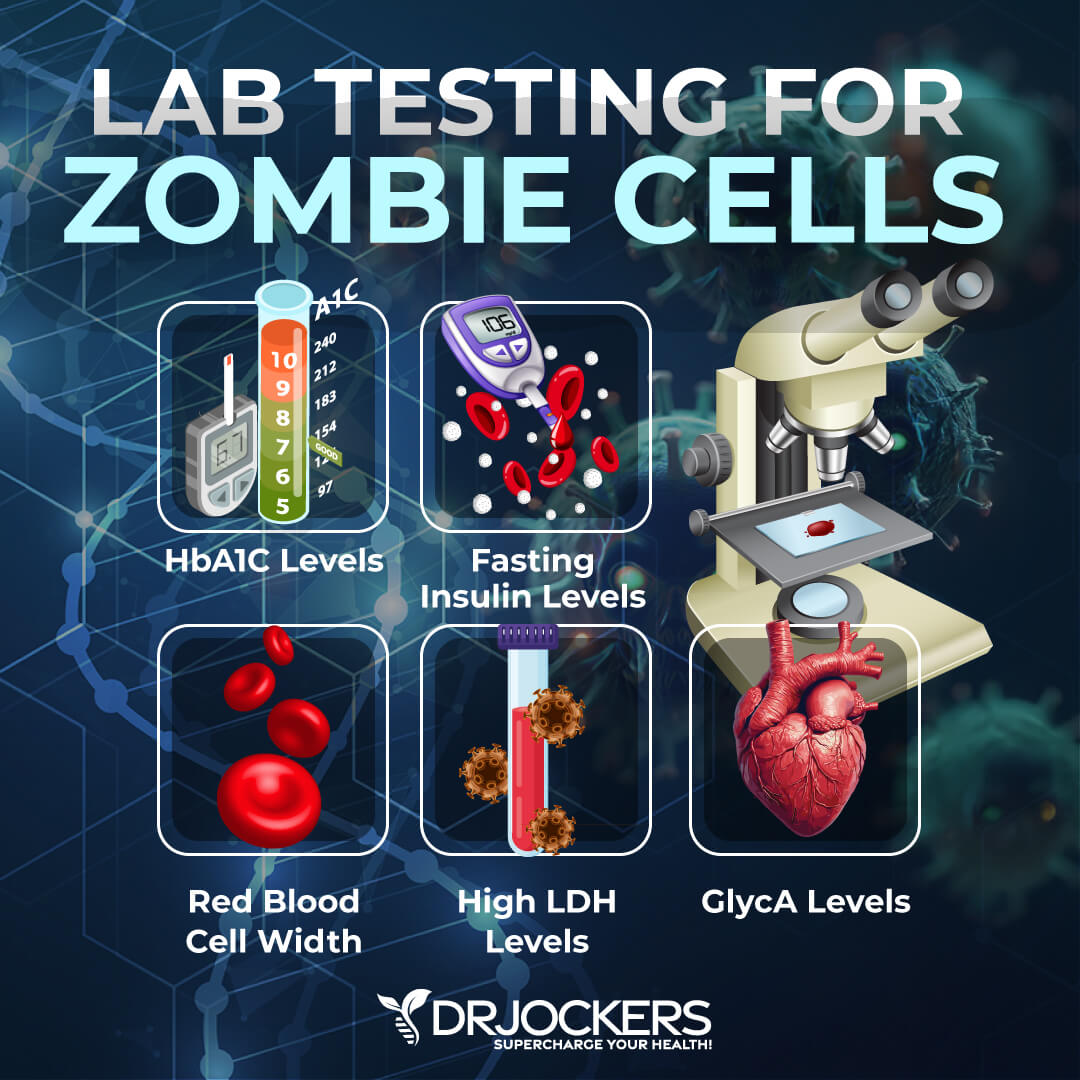
Lab Testing for Zombie Cells
Do you have zombie cells? Could they be the reason behind your health issues? I recommend some lab testing for zombie cells and related issues. This list is just a list of basic and inexpensive blood markers, you can start with. Depending on your health issues, further testing may be
HbA1C Levels
Blood sugar imbalances are one of the main causes of inflammation, so I recommend checking your hemoglobin A1C (HbA1C) levels. Hemoglobin A1C (HbA1c) gives the average amount of glucose in your blood or blood sugar over the past 3 months making it one of the top tests for inflammation and diabetes. I recommend testing for glycated Hgb.
The clinical range is under 5.5 and the ideal range is under 5.0.
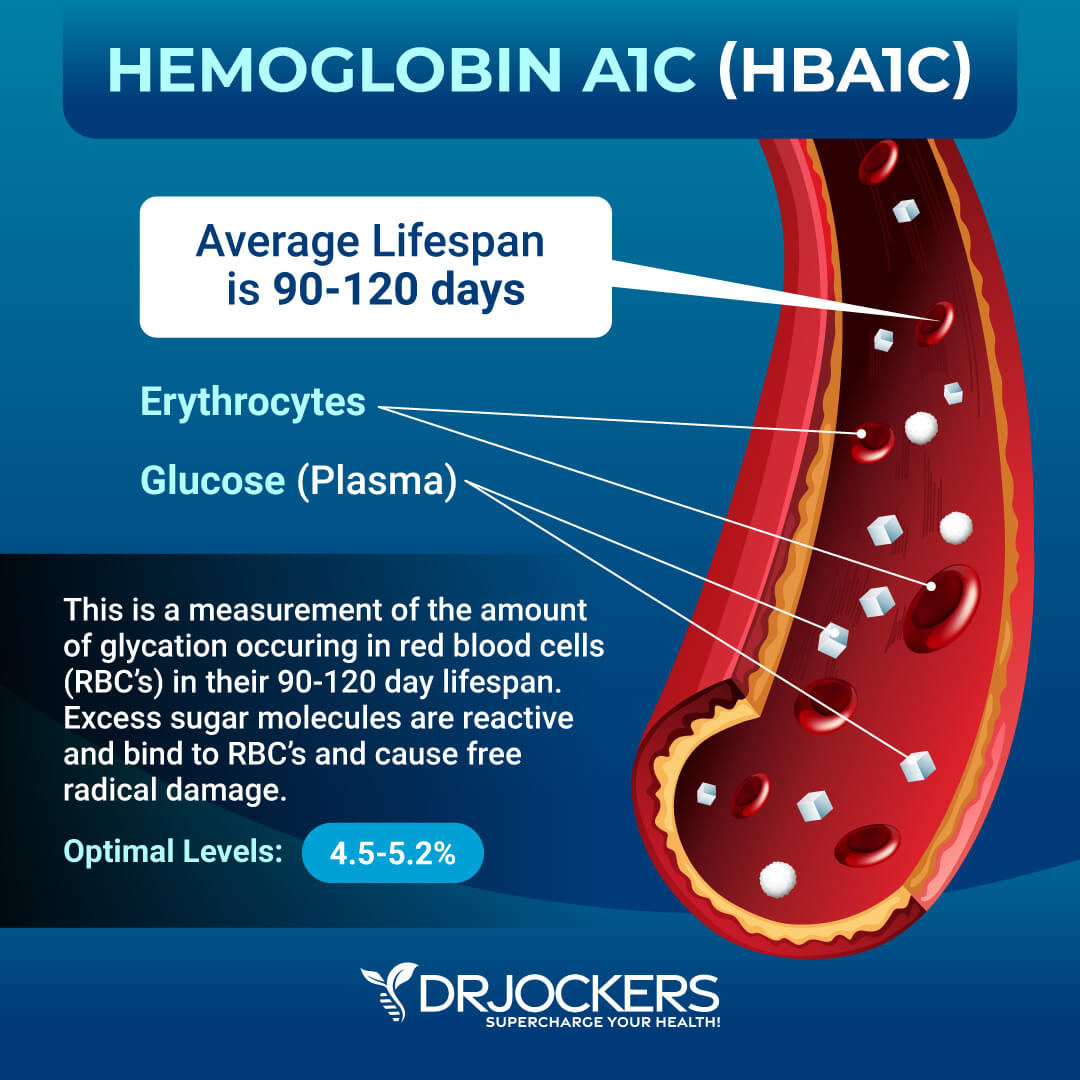
Fasting Insulin Levels
Blood sugar imbalances may increase your risk of inflammation. Insulin also blocks autophagy. Higher insulin leads to zombie cell production and accumulation.
So, in addition to testing your HbA1C levels, I recommend checking your fasting insulin levels. Testing your fasting insulin can recognize elevated blood sugar levels and can detect inflammation, insulin resistance, blood sugar issues, and diabetes.
The clinical range for fasting insulin is 2.6 – 24.9 uIU/ml and the optimal range that you want to get your levels to, is 1.0 – 5.0 uIU/ml.
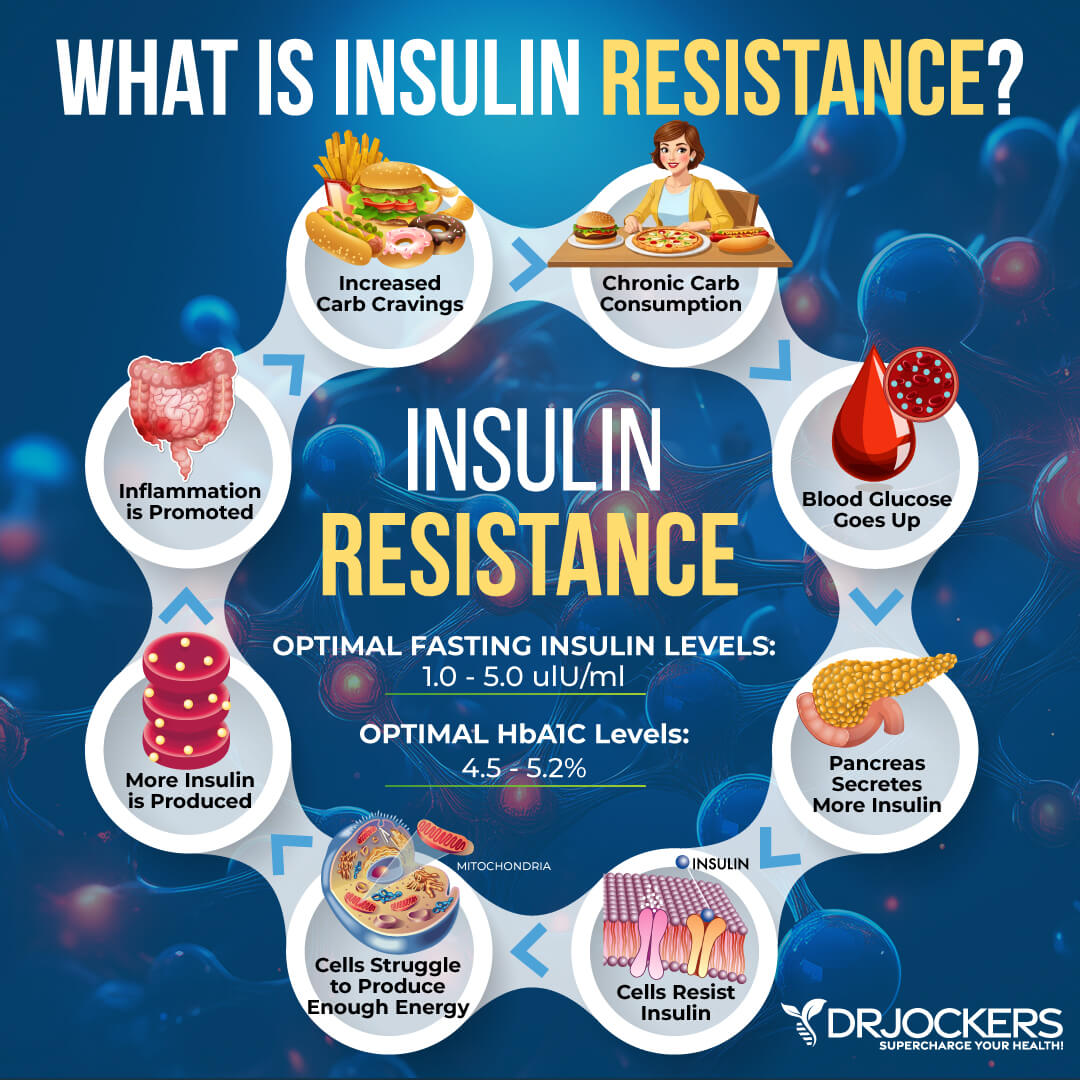
Red Blood Cell Width
The size of your blood cells has to do with maturation and also depends on methylating agents, such as folate and vitamin B12. Red Blood Cell Distribution (RDW) markers are a great way to detect underlying inflammation in your body.
The clinical range is between 12.3 and 15.4 percent while the optimal range is 11.5 and 13 percent.
You can learn more about these first four blood markers and other inflammation markers in this article.
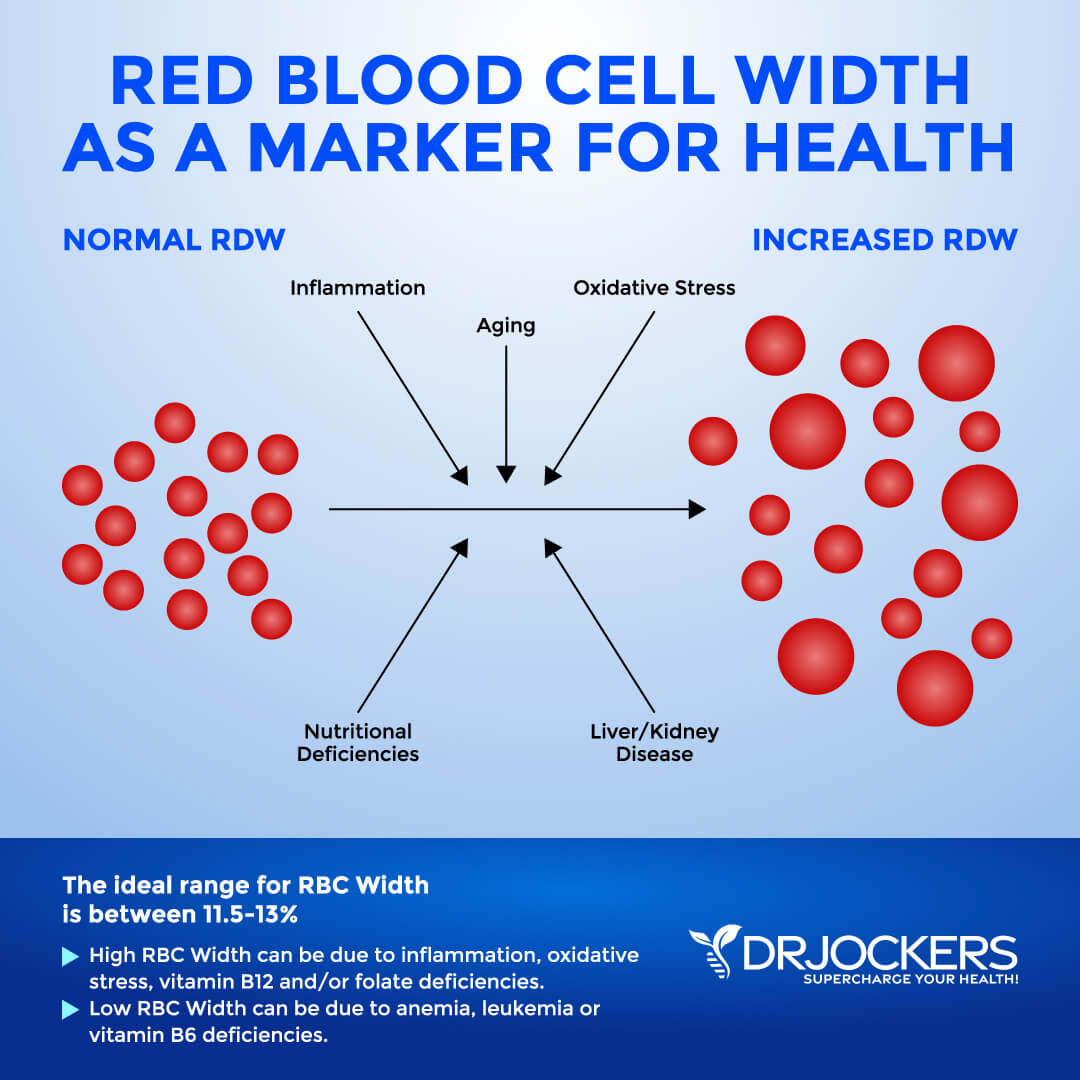
High LDH Levels
Lactate Dehydrogenase (LDH) is an enzyme found in all living cells. Elevated levels are found when the mitochondria are not functioning well and are stuck in glycolysis which indicates a state of inflammation and higher zombie cell formation.
Optimal levels are between 140-180. Levels over 180 indicate inflammation and potentially zombie cells.
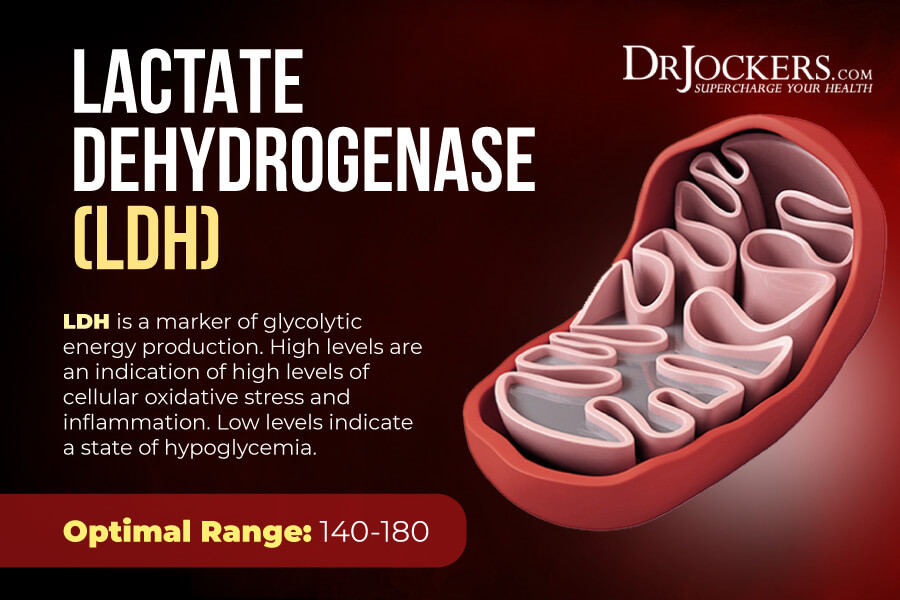
GlycA Levels
GlycA is a composite biomarker that may serve as a new biomarker for systemic, chronic inflammation. The use of GlycA may be similar and complementary to looking at c-reactive protein (hs-CRP), fibrinogen, and other inflammatory biomarkers.
High levels of GlycA may indicate systemic inflammation, the risk or presence of cardiovascular, autoimmune, or metabolic problems, and all-cause mortality. Elevated levels may be linked to insulin resistance, type 2 diabetes, metabolic syndrome, hypertension, cardiovascular disease, renal disease, COPD, gut microbiome imbalances, colorectal cancer, alcoholic liver disease, inflammatory bowel disease, immune activation, arthritis, lupus, psoriasis, other autoimmune conditions, and other inflammatory problems.
Low levels of GlycA indicated low systemic inflammation levels and glycation. However, we may see low GlycA levels in sickle cell anemia because of the hemolytic destruction of red blood cells.
The standard range is 0.00 – 400.00 umol/L and the optimal range is 100.00 – 300.00 umol/L.
You can learn more about GlycA in this article.
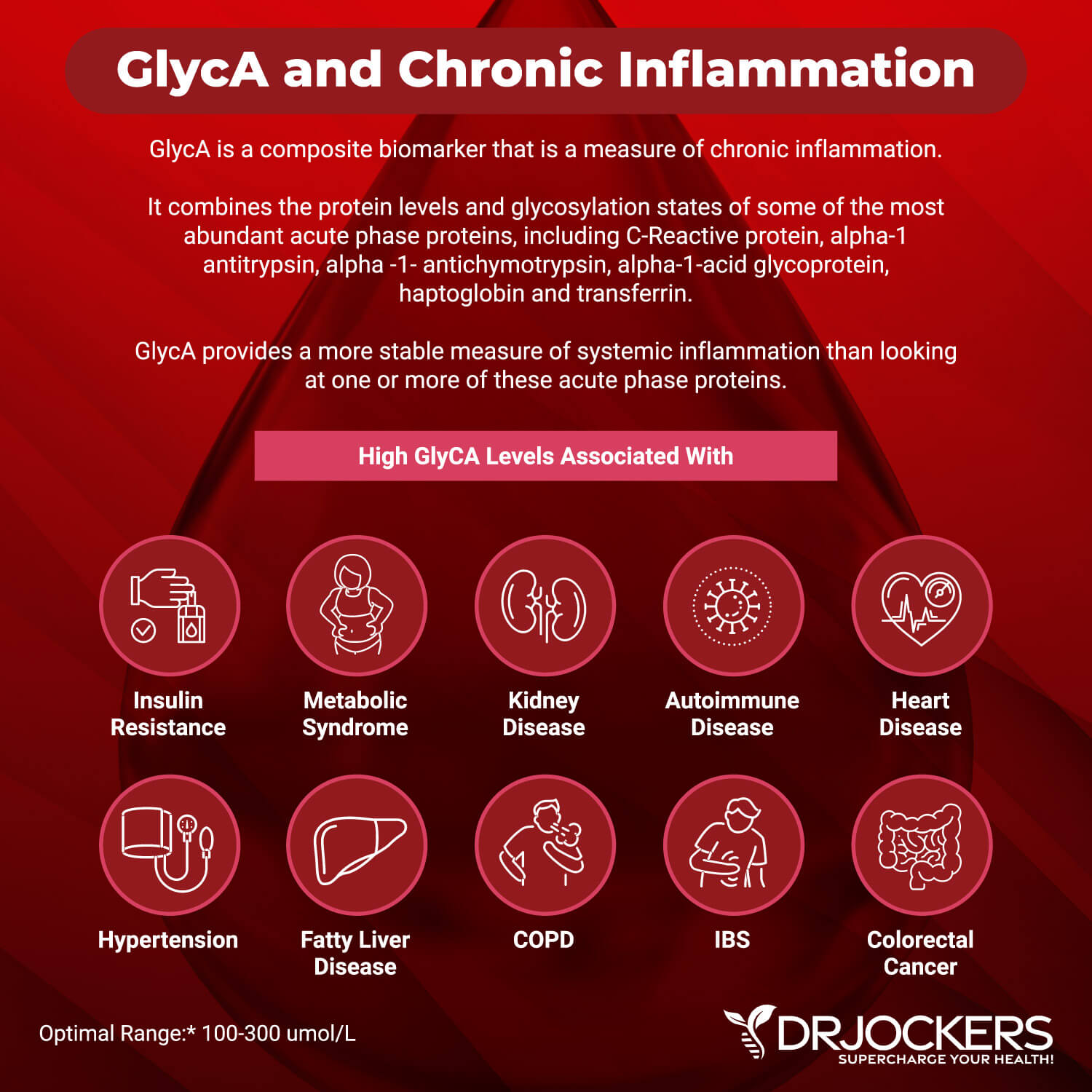
Comprehensive Blood Analysis
To check for these health markers, I recommend a Comprehensive Blood Analysis (CBA). This is the most detailed blood test that looks at all of these markers of inflammation. This test is more sophisticated than most conventional doctors are able to order.
It examines all parameters for inflammation, blood sugar levels, thyroid function, zinc and copper ratio, vitamin A and D levels, a complete metabolic panel, complete blood count, liver function, nutrient deficiencies, and more. I recommend getting the Comprehensive Blood Analysis done regularly both as a preventative measure and to monitor your inflammation levels and progress.
3 Essentials to Get Rid of Zombie Cells
Here are the 3 essentials you need to get rid of zombie cells naturally. These principles help you to lower insulin and activate autophagy.
Autophagy happens when your body recycles and gets rid of old or excess cells (like visceral fat, scar tissue or senescent cells) and cellular proteins that don’t serve a purpose or benefit your health. The major drivers of autophagy are cellular stressors such as nutrient deprivation brought on from various mechanisms including fasting, exercise, and significant temperature change.
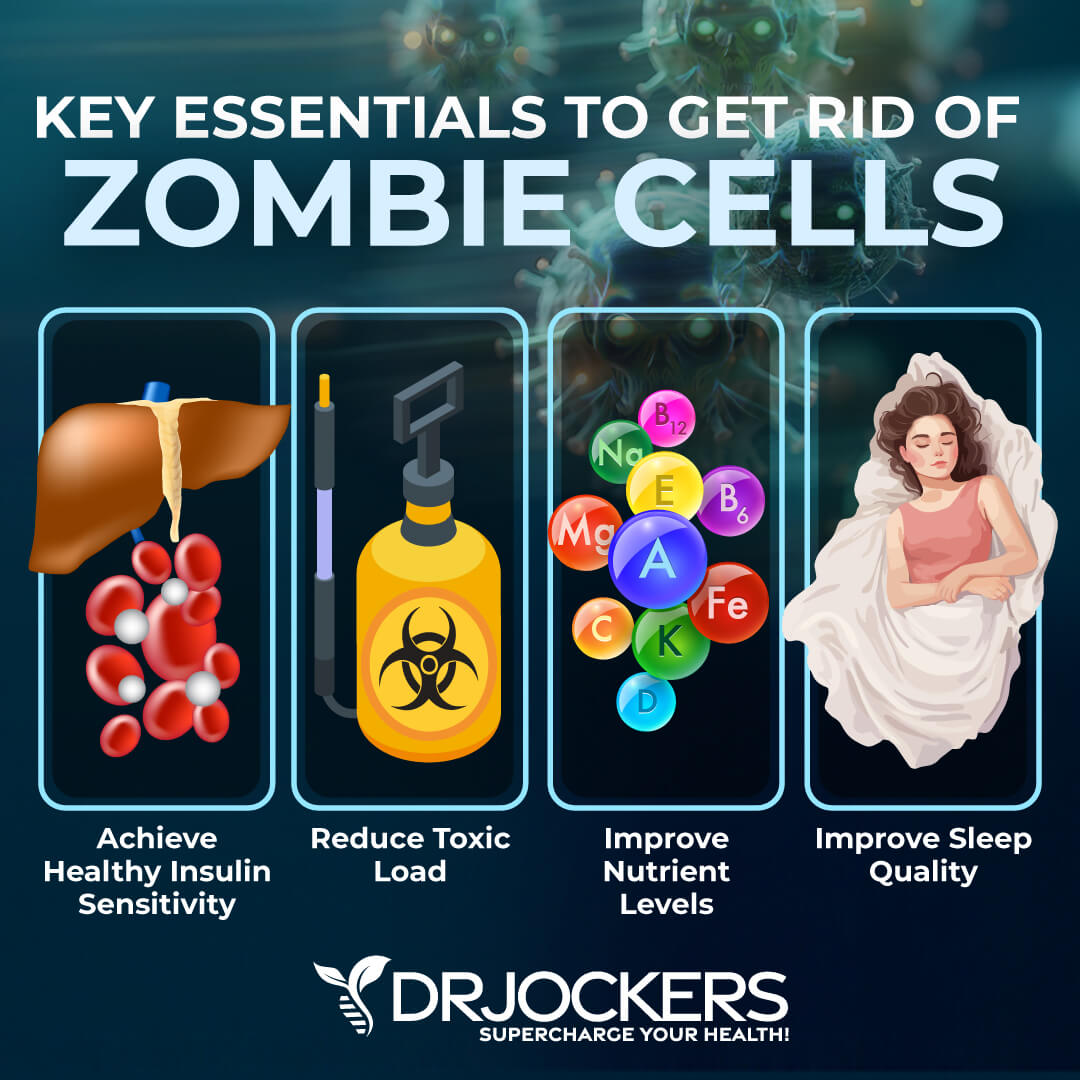
Achieve Healthy Insulin Sensitivity
Senescent zombie cells are connected to chronic inflammation and metabolic imbalances in the body. According to a 2008 study published in FEBS Letters, insulin resistance, chronic inflammation, and obesity are interconnected issues (8). According to a 2015 study published in Diabetes, zombie cells may play a role in diabetes, and addressing this issue may play a role in treatment (9).
Improving insulin sensitivity is a critical step for improving these issues. Following a healthy, nutrient-dense, low-carb diet free from refined sugar and processed foods and rich in healthy fats and clean protein is critical for doing this.
Moving your body and regular exercise, including strength training and cardiovascular workouts, also help to improve your insulin sensitivity. You will learn more about these strategies in the next sections.
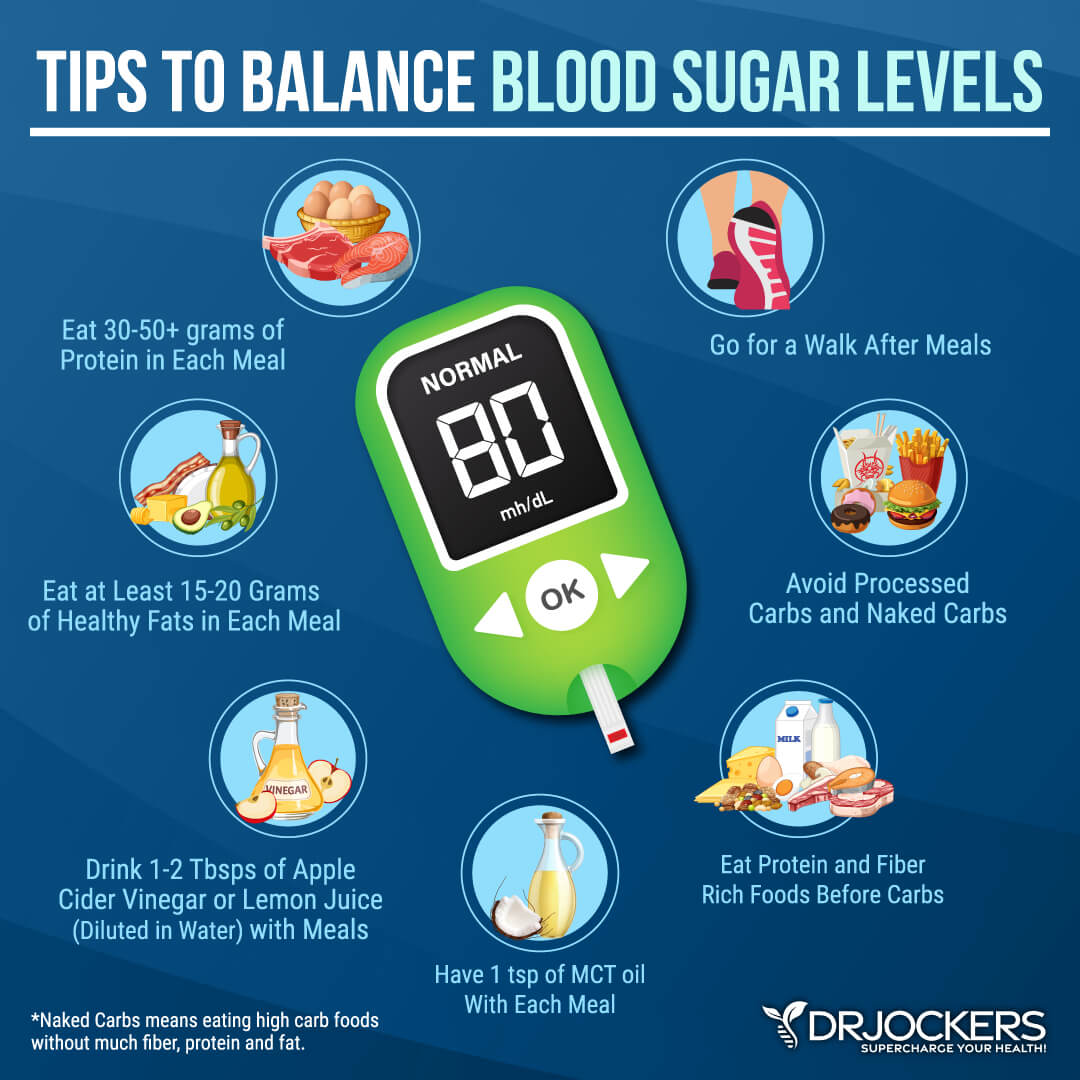
Reduce Toxic Load
Environmental toxins, including processed foods, air pollution, smoking, conventional products, and so on, can accumulate in your body. They can put a lot of stress on your cells and accelerate the development of senescent zombie cells. According to 2022 research published in Frontiers in Public Health, environmental toxins can increase inflammation (10).
Reducing your toxin load and supporting your detoxification pathways is critical for reducing zombie cells. You will learn about these strategies in the next section.
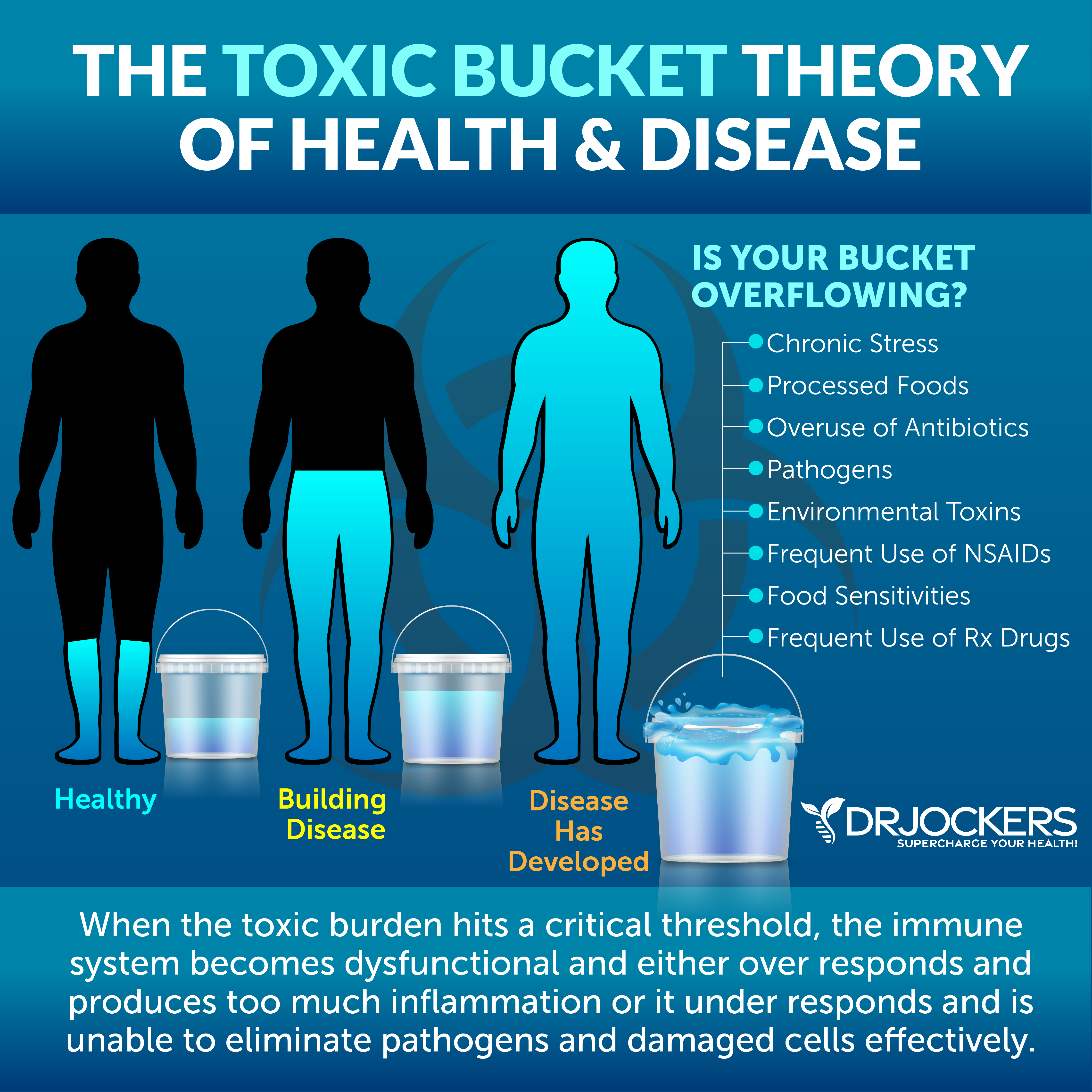
Improve Nutrients & Sleep
Poor nutrition and poor sleep can increase chronic inflammation, which can increase your risk of developing zombie cells. According to a 2021 systemic review published in Nutrients, addressing poor nutrition may improve chronic inflammation (11). According to a 2016 systematic review and meta-analysis published in Biological Psychiatry, sleep disturbances and poor sleep can increase inflammation (12).
On the other hand, improving your nutrition through a nutrient-dense diet and supplementation and getting quality sleep can help to combat chronic inflammation and oxidative stress, support your immune system, aid cellular cleanup, support autophagy, regulate hormonal health, and help to clear out zombie cells more effectively. You will learn more about these strategies in the next sections.
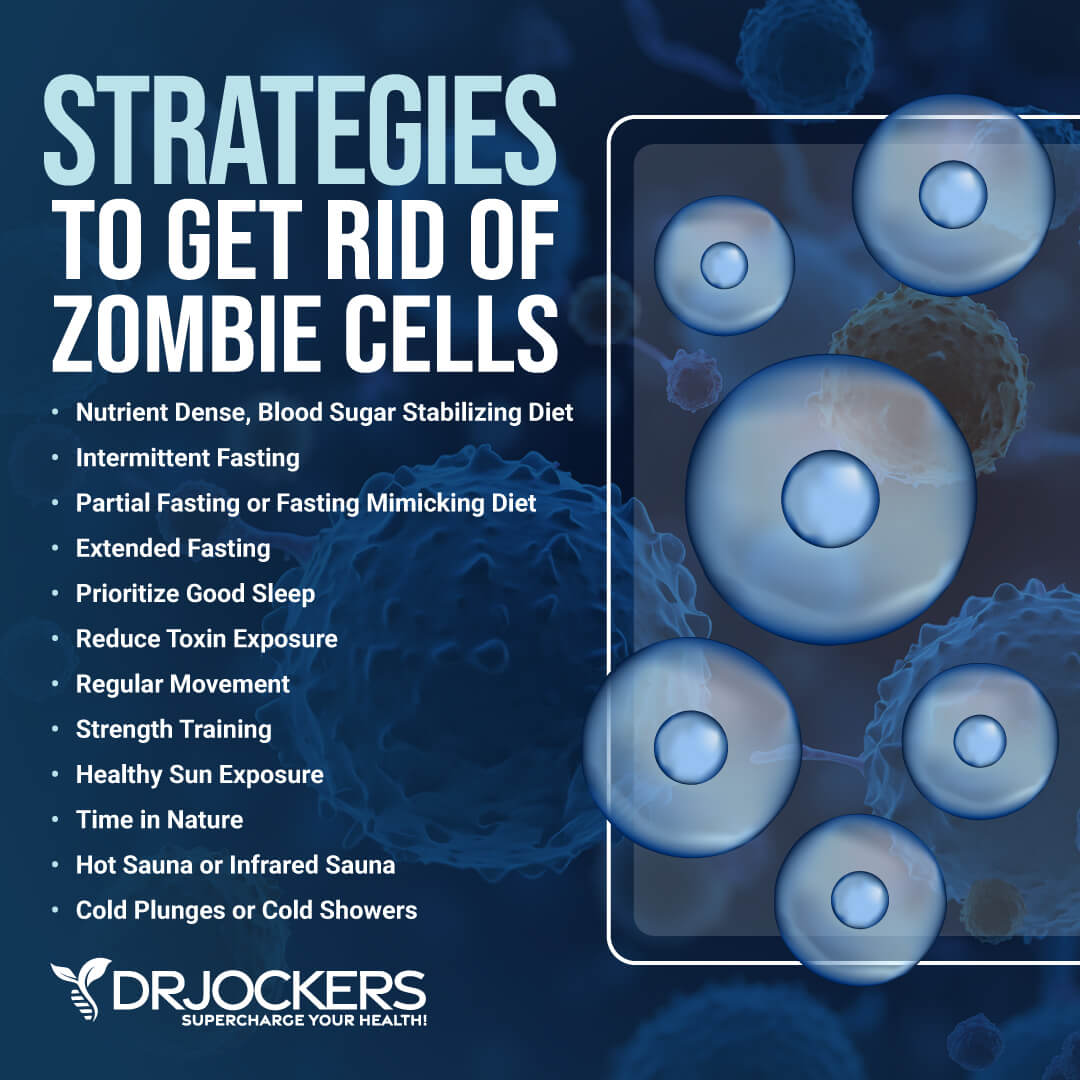
Strategies to Get Rid of Zombie Cells
Here are the strategies I recommend to get rid of zombie cells.
Nutrient Dense, Blood Sugar Stabilizing Diet
To improve chronic inflammation, insulin resistance, metabolic issues, and immune health problems, and reduce zombie cells as a result, I recommend a nutrient-dense, blood sugar-stabilizing diet. Remove any inflammatory foods from your diet, including refined sugar, refined oils, gluten, artificial ingredients, conventional dairy, processed and canned meat, conventional animal products, heavily processed foods, deep-fried foods, junk food, and food sensitivities.
Follow an anti-inflammatory, nutrient-dense, and blood sugar-stabilizing plan. This should be high in greens, vegetables, low-glycemic index fruits, herbs, spices, fermented foods, grass-fed beef, grass-fed butter and ghee, pasture-raised poultry and eggs, wild-caught fish and seafood, and wild game. Choose organic options whenever it’s possible and available to you.
Keep your carbohydrates low. Your sweet should come from limited amounts of sweet vegetables and tubers and low-glycemic index fruits. Focus on healthy fats, including avocadoes, coconut oil, coconut butter, MCT, grass-fed butter and ghee, olives, and extra-virgin olive oils.
Follow a high-fat diet with a moderate amount of clean protein from grass-fed meat, pasture-raised poultry and eggs, wild-caught fish and seafood, and wild game. Certain foods, including apple cider vinegar, coconut, green tea, cinnamon, avocados, lemon, lime, grass-fed butter, and pasture-raised eggs are particularly beneficial for stabilizing your blood sugar. You can learn more about a healthy personalized nutrition plan here.
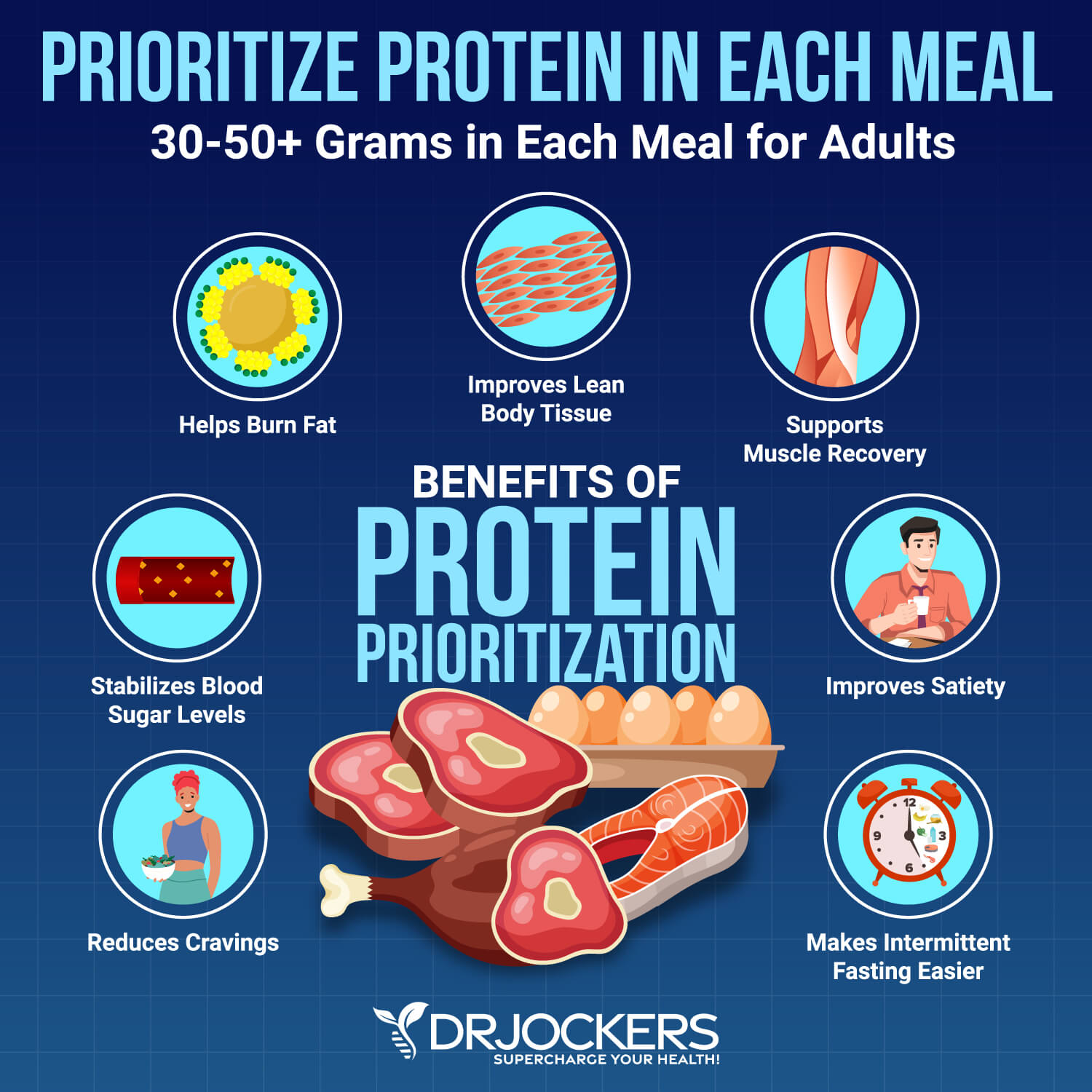
Intermittent Fasting
Intermittent fasting is a way of eating that cycles between periods of fasting and periods of eating within one day. Fasting and intermittent fasting are great ways to improve autophagy, improve insulin sensitivity, reduce chronic inflammation, support immune health, and reduce zombie cells.
If you are new to intermittent fasting, I recommend that you start with the Simple Fast. This method involves 12 hours of fasting including your overnight sleep. You may start your fast after dinner and don’t eat for 12 hours until breakfast.
During your eating window, focus on a nutrient-dense, anti-inflammatory, and ketogenic diet to meet your nutrient and caloric needs. Gradually increase your fasting window until you find what works for you. Most people do the best with a 16-hour fasting window using the 16:8 method. You can learn more about the best intermittent fasting strategies from this article.
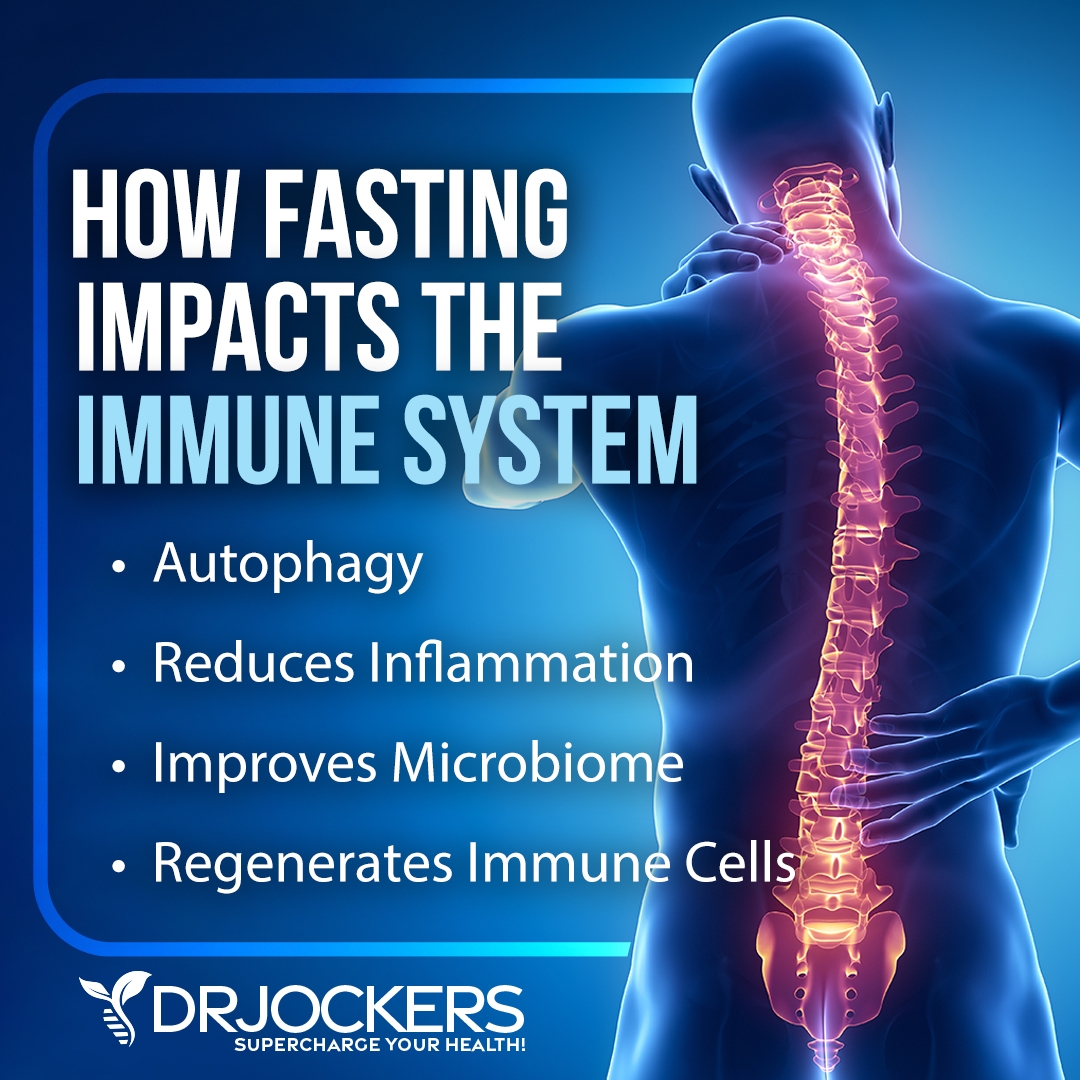
Partial Fasting or Fasting Mimicking Diet
If you are ready to experience the benefits but not quite ready to go completely without food, you may experiment with a partial fast. Partial fasts usually involve a strategy that focuses on liquids or caloric reduction. You may trial a liquid partial fast. Green Juice Fasting focuses on green juices, while Bone Broth Fasts focus on drinking bone broth for a few days.
One partial fasting strategy that I particularly recommend is the Fasting Mimicking Diet® or FMD®, a partial fasting plan that is high in nutrients, low in protein, and low in carbohydrates. On Day 1, restrict your calories to 1,100 calories a day. 500 of these calories should come from complex carbohydrates and 500 from healthy fast.
About 100 calories or 25 grams of plant-based proteins are also allowed, mainly from nuts. On Days 2 to 5, your calories are restricted to 800 calories only with 400 calories from complex carbs and 400 calories from healthy fats.
You may also turn to a Fat or Keto Fast or the Daniel Fast. The Fat or Keto Fast focuses on eating 500 to 1000 calories a day with 90 percent of those calories coming from healthy fats and helping your diet to get to ketosis.
The Daniel Fast is a Biblical fast focusing on a plant-based, vegetarian diet for 21 days. While I don’t recommend following a vegetarian diet for long term, for a short duration you may benefit from this high-nutrient and light meal plan. You can learn more about partial fasting from this article.
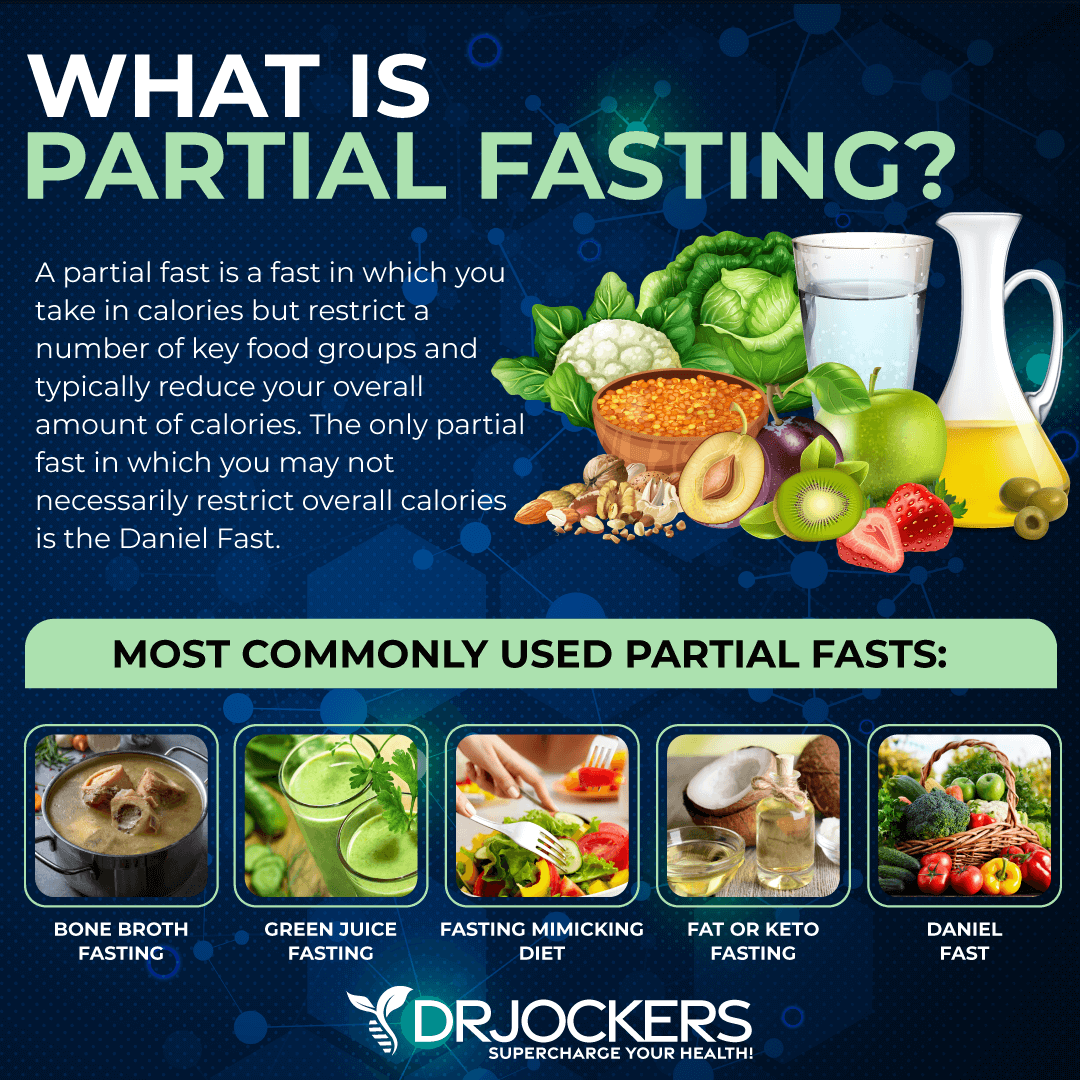
Extended Fasting
If you are ready and doing well on longer intermittent fasting or partial fasting plans, you may try an extended fast. During an extended fast or water fast, you will be only drinking non-caloric drinks, including purified water and herbal tea.
The extended fast may last for a day or several days. This strategy is only for those who are experienced fasters. You can learn more about water fasting and extended fasting by reading this article.
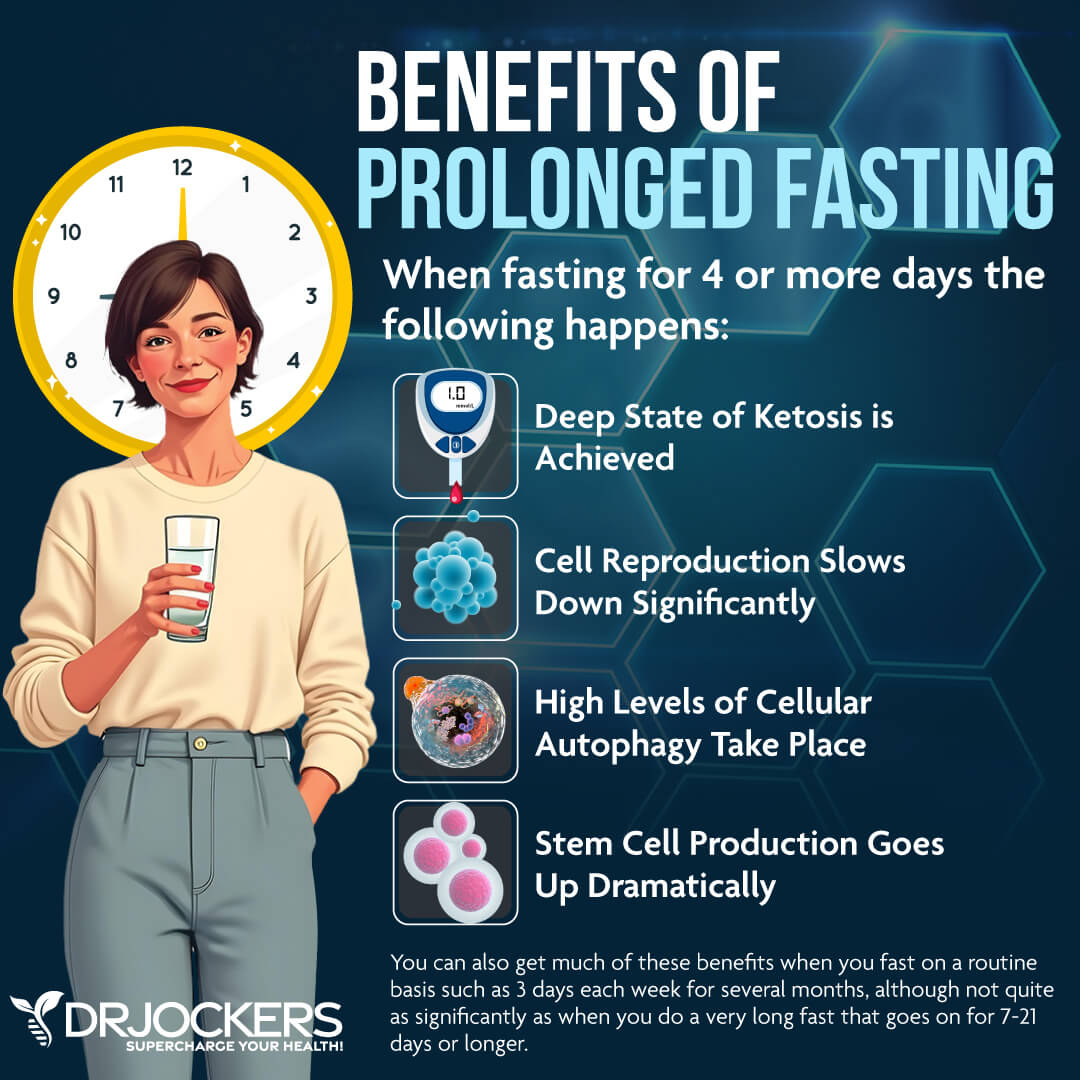
Prioritize Good Sleep
Since poor sleep can increase chronic inflammation and the development of zombie cells, improving your sleep is key. Aim for 7 to 9 hours of restorative sleep at night. To support your circadian rhythm, try to go to bed and wake up around the same time each day.
Avoid electronics, sugar, alcohol, foods, and stress in the evening. Develop an evening routine that’s calming and relaxing. Calm family time, listening to music, reading, crossword puzzles, journaling, light stretching, taking healing baths, sipping on herbal tea, and meditation to help you relax before going to bed.
Make sure that you have a supportive mattress, comfortable pillows, and bedding, and that your bedroom is a safe and calming sanctuary.
Reducing your daytime stress is also key for good sleep, daytime energy, low inflammation levels, and optimal health. I recommend that you practice meditation, breathwork, journaling, guided relaxation, visualization, grounding, and prayer. Spend time in nature. Connect with friends, family, and your community. Reserve some me-time as well.

Reduce Toxin Exposure
Lowering your toxin exposure is also critical for reducing chronic inflammation, oxidative stress, and zombie cell development. Avoid pesticides, artificial ingredients, and additives in your food. Choose organic food whenever possible.
Lower your use of plastics and opt for glass, wood, bamboo, ceramic, and cloth products depending on their purpose. Avoid chemical-filled conventional cleaning, personal hygiene, body, and beauty products. Choose organic, natural, and homemade alternatives instead.
Improve your indoor air with the help of a high-quality HEPA filter system. Avoid city tap water. Invest in a water purification system and drink purified water. Make sure that your home is free from mold. Avoid second-hand smoke and polluted city environments as much as possible. Spend time in nature.
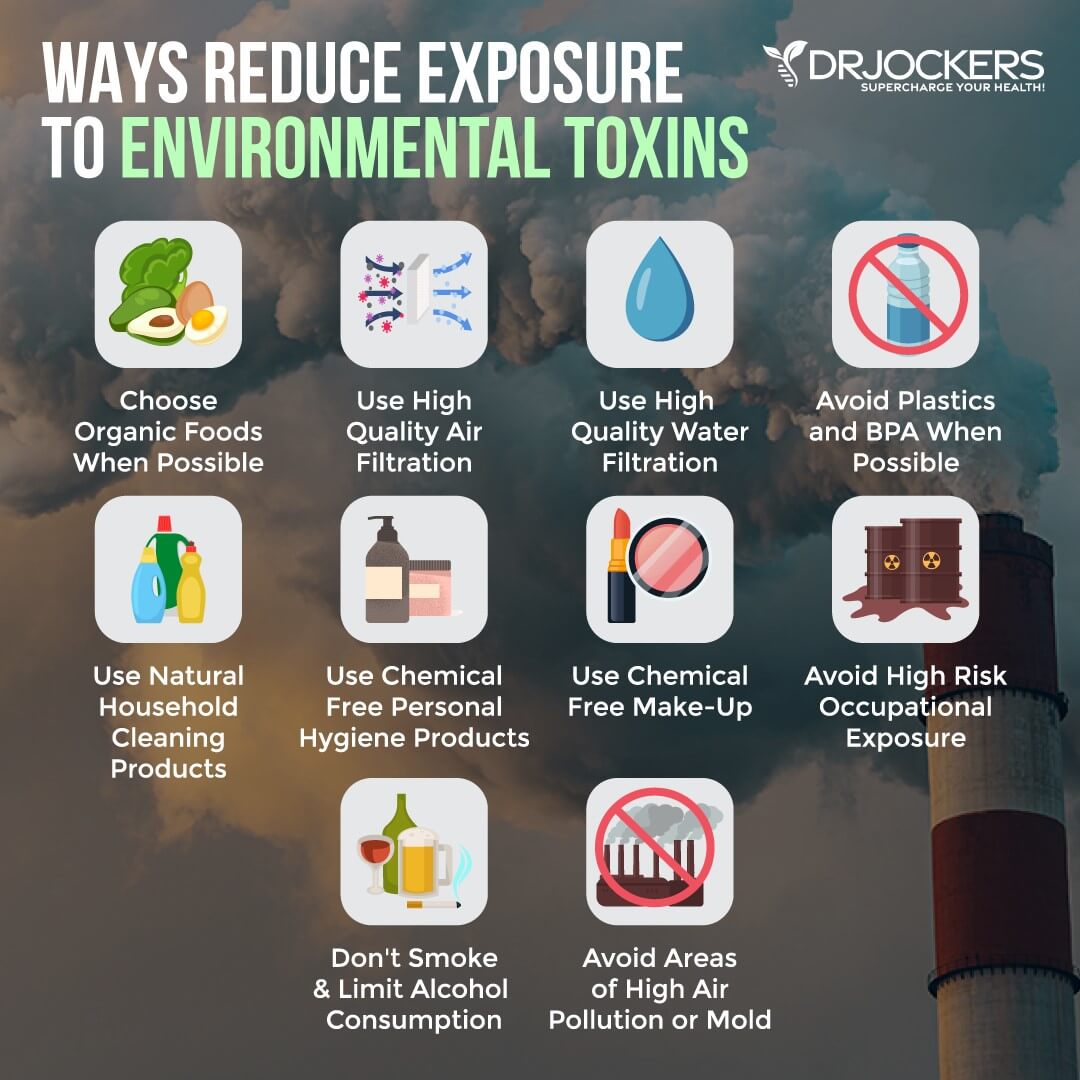
Regular Movement and Strength Training
Regular movement and exercise are key for keeping your inflammation levels low and keeping zombie cells at bay. Incorporate regular movement into your day. Start your day with some stretching, yoga, rebounding, or a short walk. Get up and stretch regularly throughout the day.
You can even get up for an impromptu dance session or a little walk-in place. You may try a walking pad or standing desk instead of sitting all day. Go for a walk during lunch. Take the stairs instead of the elevator. Play with your kids or pets. Dance to your favorite song for a short dance session.
Workout regularly, at least five times a week combining strength training and cardiovascular workouts. Great options for strength and resistance training include bodyweight exercises, weightlifting, weight machines, kettlebell training, CrossFit, and TRX.
Doing intense strength training to build muscle as well as fasted exercise are really good ways to break down zombie cells. High-intensity interval training (HIIT) and tabata workouts incorporate both cardio and strength training within a quick workout. You can also incorporate low-impact exercise, including pilates, yoga, barre workouts, and TaiChi.
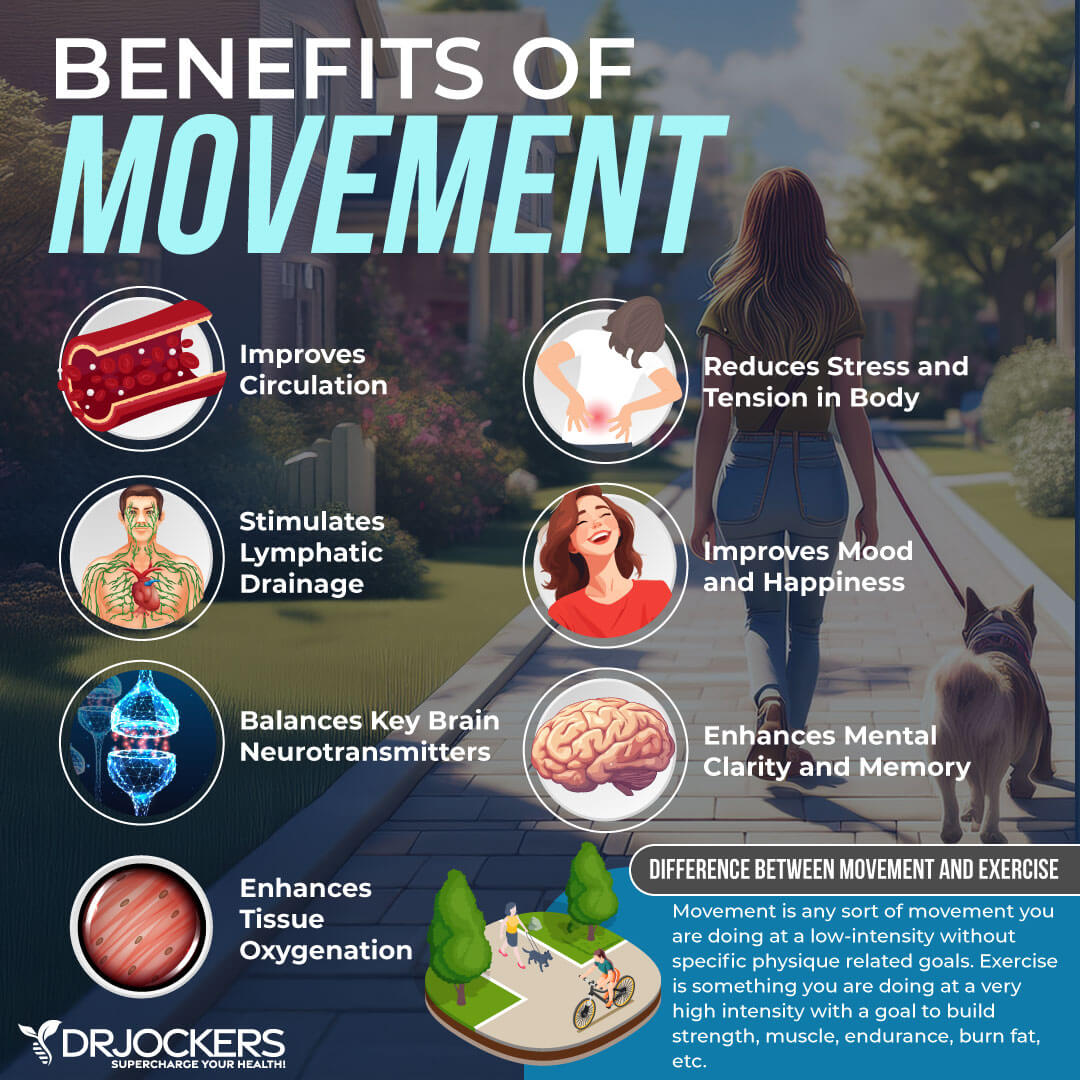
Healthy Sun Exposure, Grounding, and Time in Nature
Healthy sun exposure, grounding, and time in nature are critical for your health. Vitamin D is essential for keeping inflammation levels low and keeping your body healthy.
Getting some sunshine on a regular basis is the best way to improve your vitamin D levels. However, in addition to sun exposure, I also recommend daily vitamin D3/K2 supplements to keep your vitamin D levels normal, especially if you live in a cloudy, gloomy, rainy, or snowy climate much of the year.
Sunshine is not only important for vitamin D. It can also uplift your spirits and reduce stress. Additionally, grounding and time in nature can also reduce your stress levels, lower inflammation, and offer an opportunity to get some fresh air. You can combine these three things by hiking, going for a nature walk, walking barefoot on the grass, or taking your exercise routine outside.
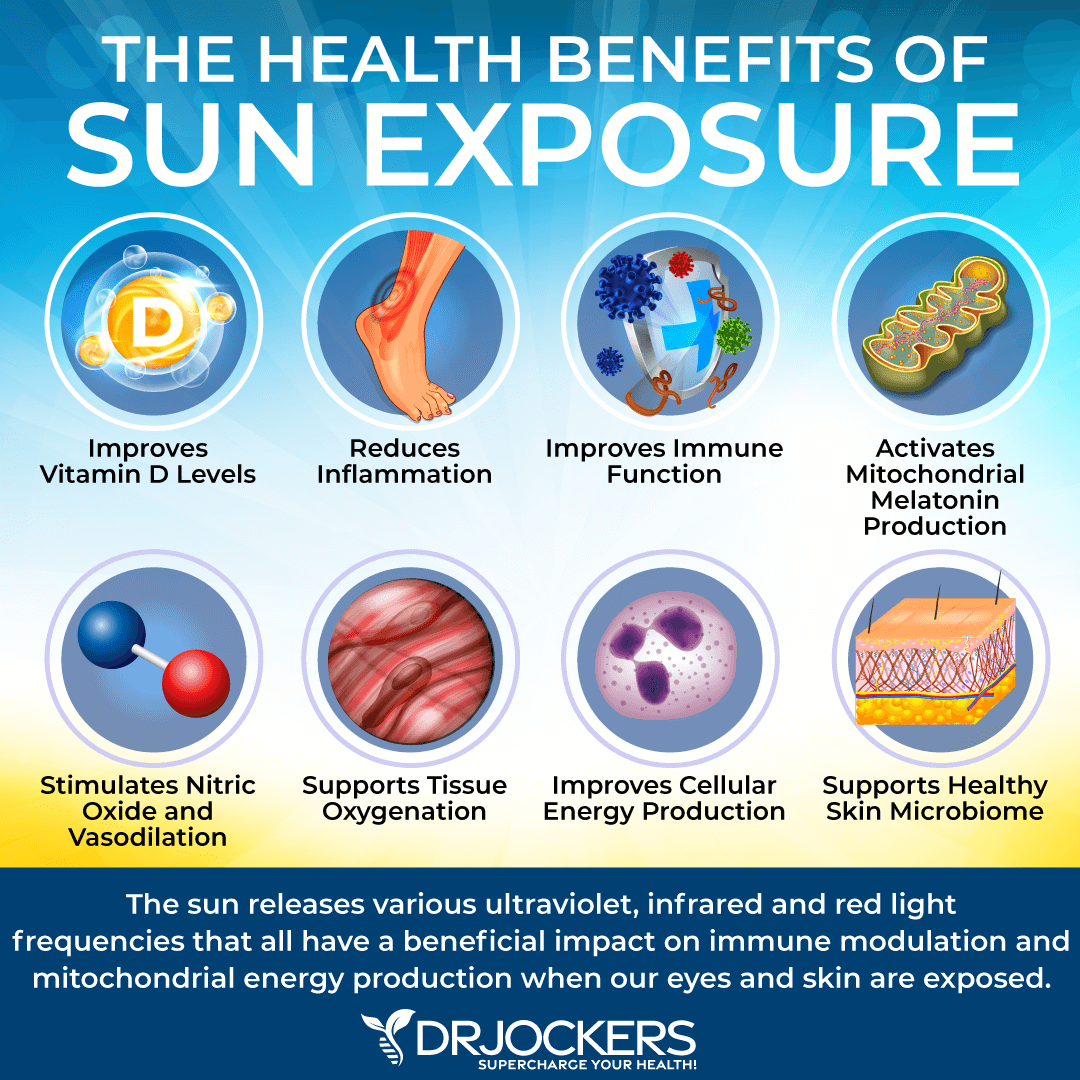
Use an Infrared Sauna
Heat therapy is a great way to support cellular renewal, energy levels, and overall health. It can support detoxification processes through sweating, reduce stress, and lower chronic inflammation and chronic symptoms.
Infrared sauna therapy is a form of sauna that uses infrared heaters that release infrared light that you experience as heat as it gets absorbed through the surface of the skin. Infrared sauna therapy uses Far Infrared Technology (FIR), which is a non-invasive light therapy that can penetrate your body as much as three inches.
The heat from an infrared sauna penetrates deeply into your skin without heating up the room first like a traditional sauna. It directly acts on your body and may be more effective than regular saunas.
I recommend adding an infrared sauna session to your daily routine. Fortunately, you can buy some easy-to-store small infrared sauna devices that fit even in a small studio apartment. You may learn more about infrared saunas for detoxification and immune support by reading this article.
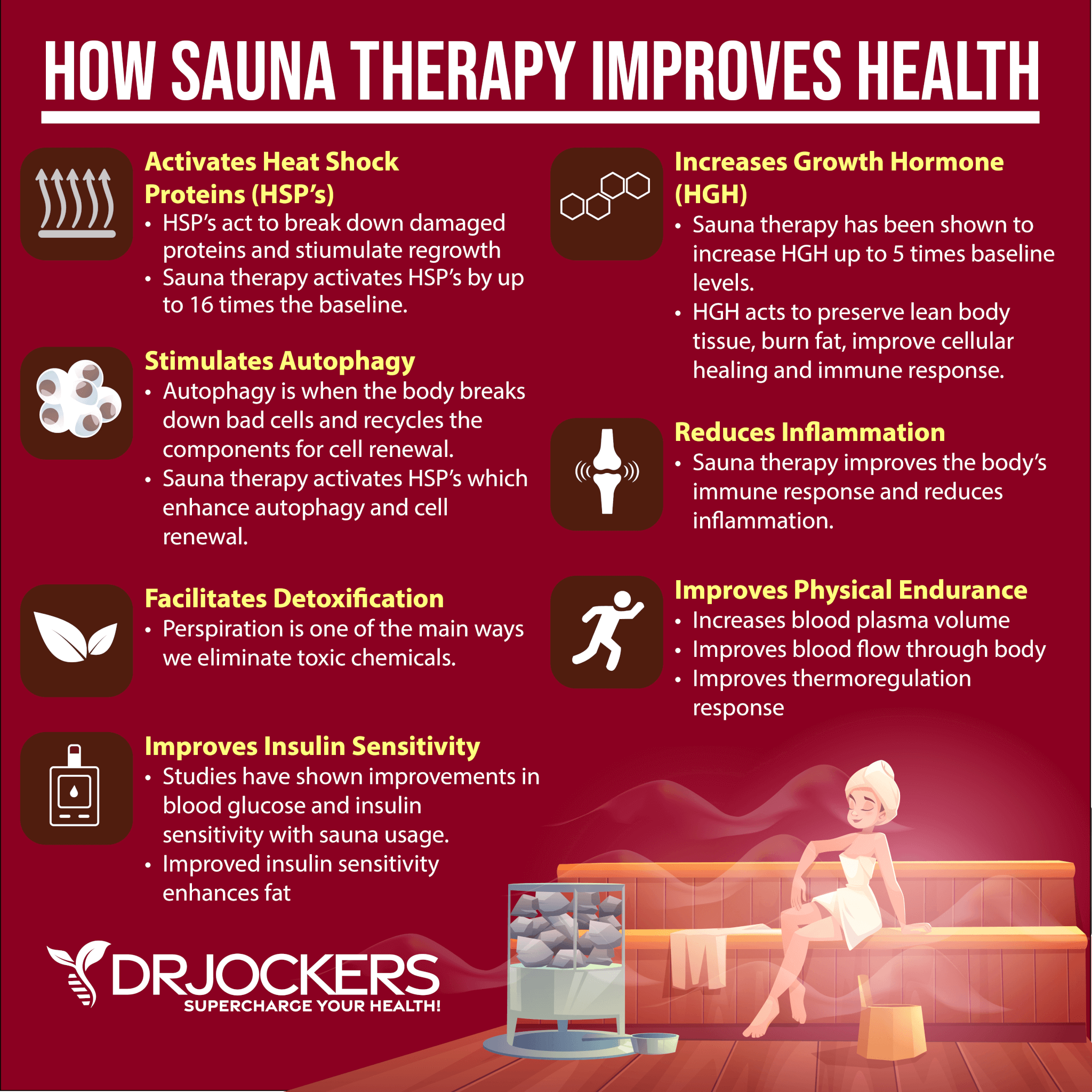
Take Cold Showers or Do Cold Plunges
Finally, you may also take some cold shower or cold plunges. Cold therapy can support cellular renewal, keep inflammation levels at bay, improve energy levels, and support overall health. You may even combine heat therapy from infrared sauna and cold therapy.
You may finish your sauna session with a cold plunge into a pool, sitting in a cold bath, or a cold shower. You may also alternate between the sauna and cold plunge or hot and cold shower for similar results.
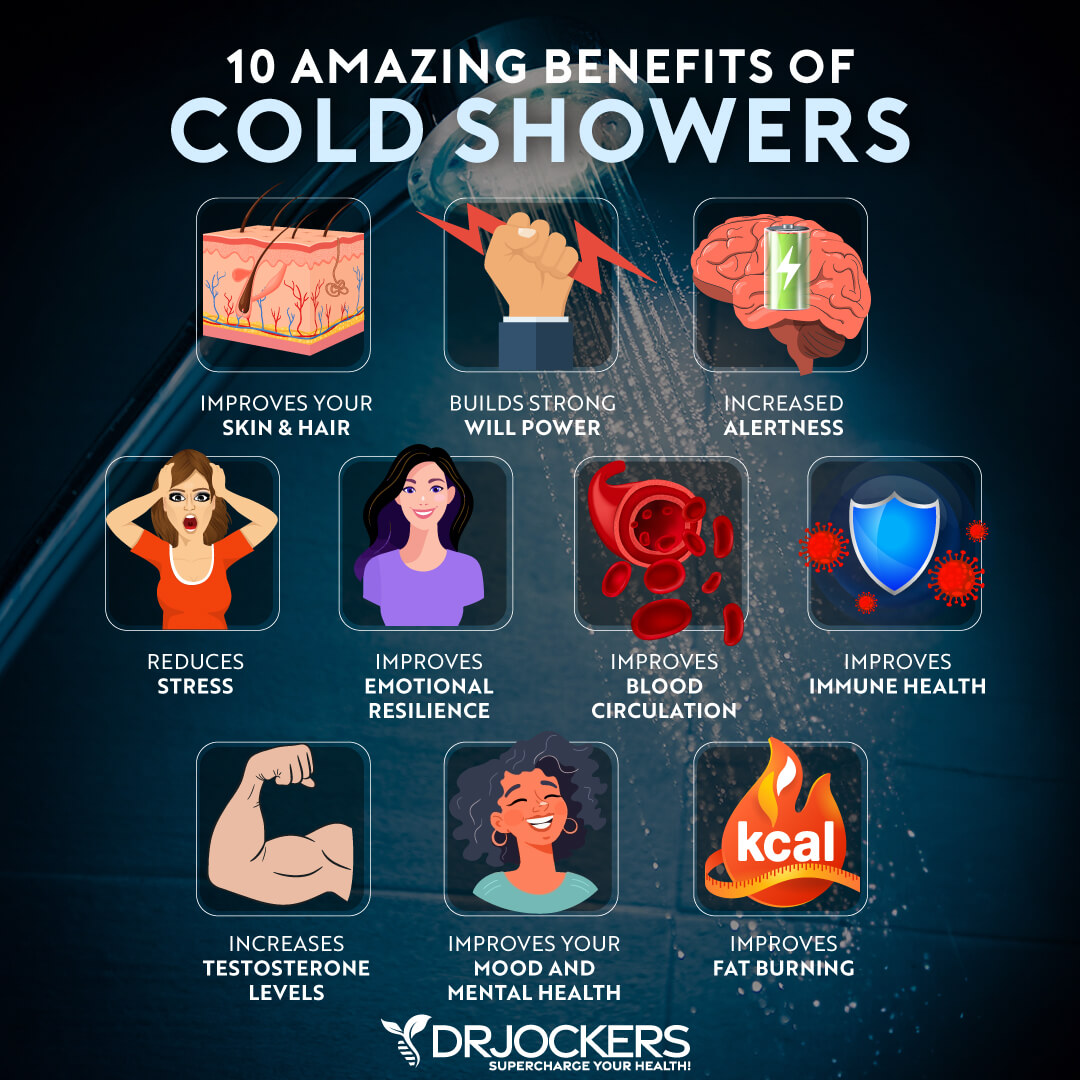
Key Herbs and Supplements
Additionally, I recommend the following key herbs and supplements to get rid of zombie cells.
Proteolytic Enzymes
Proteolytic enzymes, also known as proteases, are powerful biocatalysts that carry out and speed up chemical reactions in your body. They are enzymes that break down proteins into smaller peptides or amino acids. They help to reduce inflammation by breaking down inflammatory proteins, such as fibrin, which can accumulate in tissues and exacerbate swelling and pain.
Proteolytic enzymes also support your body’s natural cleanup processes, and by that, they are helping the removal of cellular debris and potentially targeting senescent zombie cells. They may also promote tissue repair and regeneration. Common sources of proteolytic enzymes include bromelain from pineapple, papain from papaya, and animal-derived enzymes like trypsin and chymotrypsin.
To experience the proteolytic enzymes, as well as, the benefits of some anti-inflammatory herbs, such as curcumin, boswellia, ginger, rosemary extract, quercetin, and ruin, I recommend Inflam Defense. I love Inflam Defense because it can help downregulate the inflammatory process.
It can help you if you are dealing with the negative impact of acute or chronic inflammatory conditions. Take one capsule twice a day with meals or for advanced protection, take two or more capsules twice a day or as directed by your health care practitioner.

Senolytic Compounds
Senolytic compounds can be natural or synthetic agents. They help to reduce chronic inflammation, promote tissue regeneration, and support overall health. They help to activate autophagy and clean up damaged cells and zombie cells.
They are great for combating age-related inflammation, improving resilience, supporting a healthier cellular environment, and improving longevity. Senolytic compound include quercetin, 6-shogaol, curcumin, resveratrol, EGCG, citrus bergamot, carnosic acid, and berberine.
- Quercetin is a plant-derived flavonoid with antioxidant and anti-inflammatory properties. Quercetin can be found in blueberries, cranberries, blackberries, bilberries, some other berries, black currents, black plums, cherries, grapes, kale, cabbage, chicory greens, cabbage, cruciferous vegetables, asparagus, capers, scallion, shallot, snap peas, red onion, pepper, and many herbs.
- 6-Shogaol is a bioactive compound found in dried or heated ginger, known for its potent anti-inflammatory and antioxidant properties.
- Curcumin is the active compound of turmeric, which is the most researched herb for its anti-inflammatory properties.
- Resveratrol is found in the skin of grapes, red wine, and some berries. It is known for its antioxidant, anti-inflammatory, and potential anti-aging properties.
- EGCG (epigallocatechin gallate) is found in green tea. It is a powerful antioxidant polyphenol with antioxidant and anti-inflammatory properties.
- Bergamot is a citrus fruit known for its fragrant oil and extract. It may help to reduce chronic inflammation, lower stress, support mood, and protect heart health.
- Carnosic acid is a potent antioxidant found in rosemary and sage. It may offer anti-inflammatory, neuroprotective, anti-inflammatory, and anti-cancer properties, and may support cellular health.
- Berberine is a natural alkaloid found in plants like barberry and goldenseal. It may help to support blood sugar regulation and insulin sensitivity. It may also help to reduce inflammation and support gut and cardiovascular health.
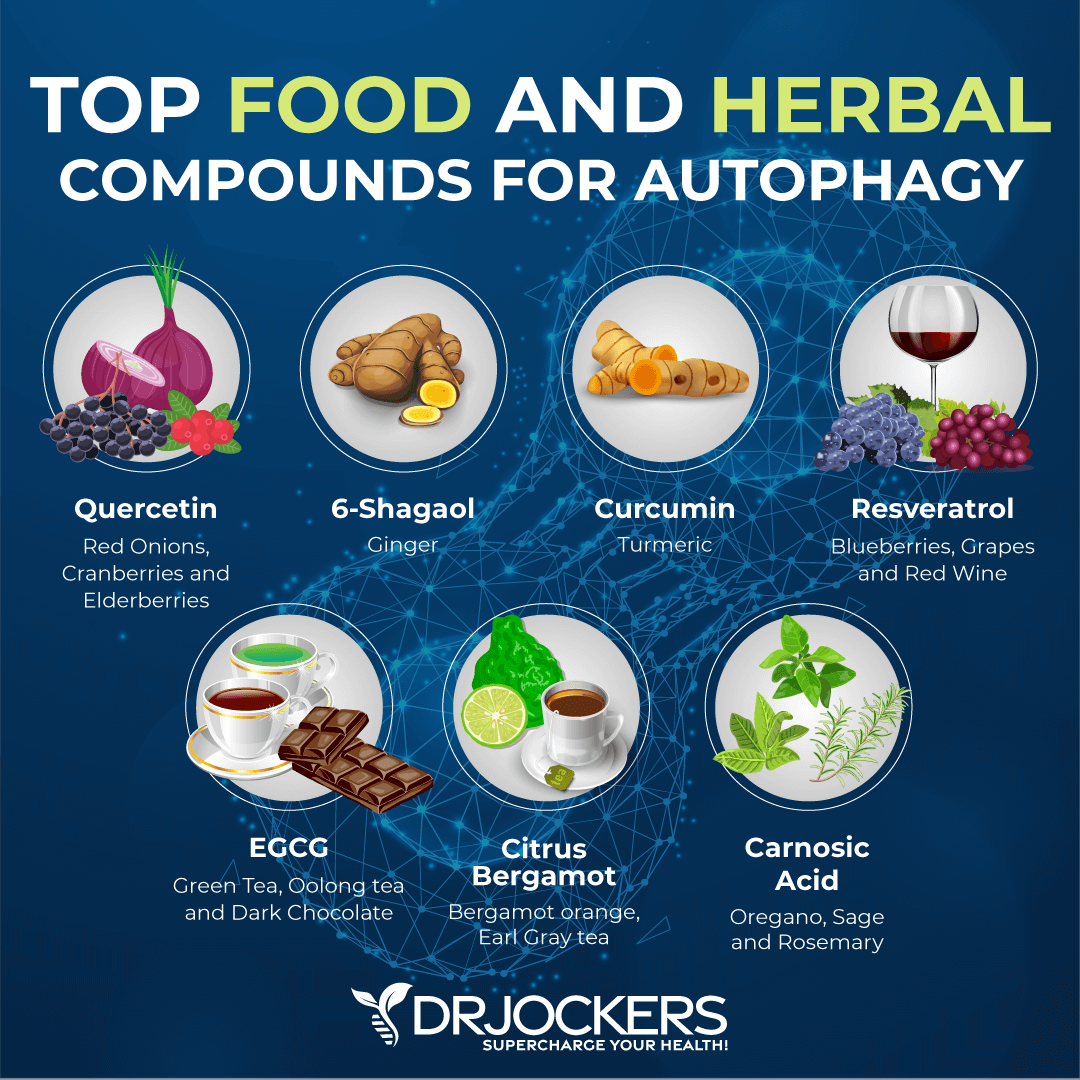
Try Inflam Defense:
Inflam Defense™ is my favorite supplement to support a healthy inflammatory response and to protect you from health issues that may result from zombie cell accumulation.
Inflam Defense™ is a powerful combination of anti-inflammatory herbs such as curcumin, boswellia, ginger, and rosemary extract as well as nutrients from quercetin and rutin, and proteolytic enzymes. I love this product because it can help downregulate the inflammatory process. It can help you if you are dealing with the negative impact of acute or chronic inflammatory conditions.
If you are looking to keep inflammation under control and have a healthy immune system, choose Inflam Defense™. Take one capsule twice a day between meals or for advanced protection take two or more capsules twice a day between meals or as directed by your health care practitioner.
Immunocharge
I recommend taking Immonocharge for immune and overall health. This supplement includes quercetin, resveratrol, magnesium, zinc, NAC+, vitamin A, C, D, and K2. It offers antioxidant support, antiviral properties, immune support and senolytics to get rid of zombie cells. It may help to reduce the histamine response, oxidative stress, and inflammation.
It may help to improve mitochondrial health, heart health, circulation, blood sugar and insulin levels, hormonal health, brain health, cognition, energy, and sleep. I recommend taking 2 capsules 2 times a day.
***Special Offer: Save 30% on Immunocharge with the coupon code Immune30 at checkout!
Final Thoughts
Zombie cells are damaged cells that have stopped dividing and functioning normally but refuse to die. They refuse to die despite being damaged. They accumulate in your body damaging your healthy cells and tissues.
Zombie cells can increase your risk of chronic symptoms and health issues. I recommend that you follow my recommendations in this article to get rid of zombie cells and regain your health and vitality.
If you want to work with a functional health coach, I recommend this article with tips on how to find a great coach. On our website, we offer long-distance functional health coaching programs. For further support with your health goals, just reach out and our fantastic coaches are here to support your journey.
Inflammation Crushing Ebundle
The Inflammation Crushing Ebundle is designed to help you improve your brain, liver, immune system and discover the healing strategies, foods and recipes to burn fat, reduce inflammation and Thrive in Life!
As a doctor of natural medicine, I have spent the past 20 years studying the best healing strategies and worked with hundreds of coaching clients, helping them overcome chronic health conditions and optimize their overall health.
In our Inflammation Crushing Ebundle, I have put together my very best strategies to reduce inflammation and optimize your healing potential. Take a look at what you will get inside these valuable guides below!
